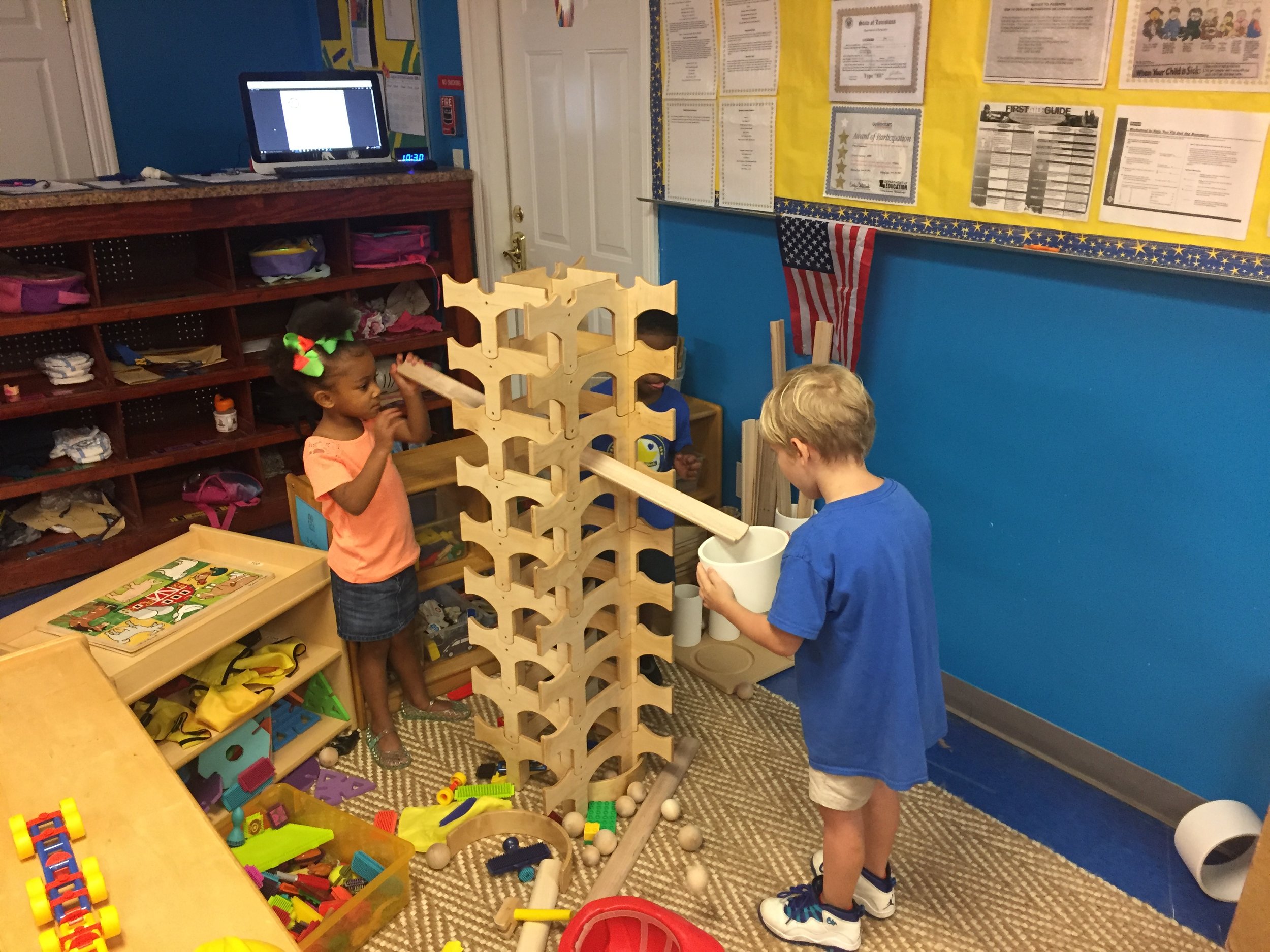
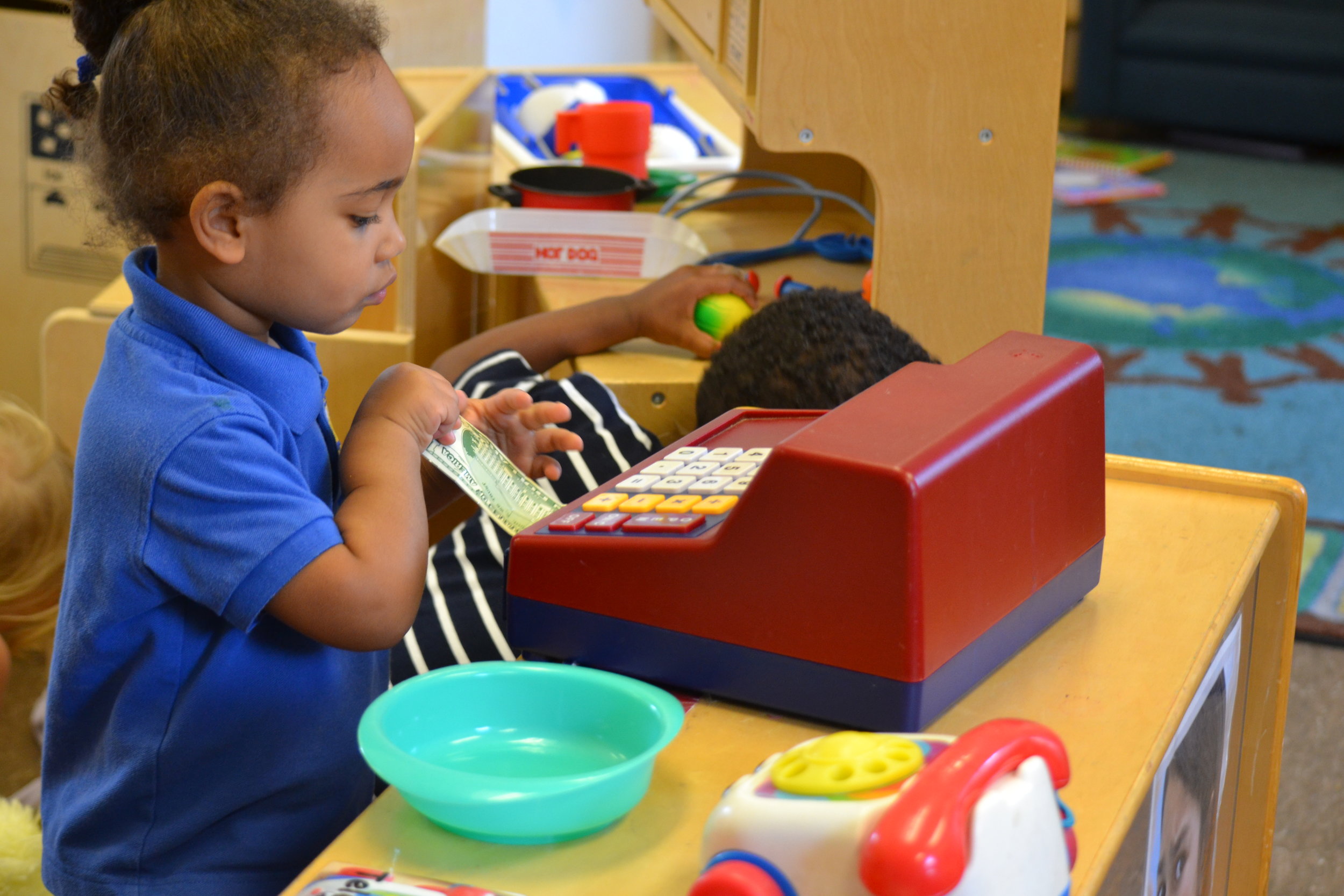

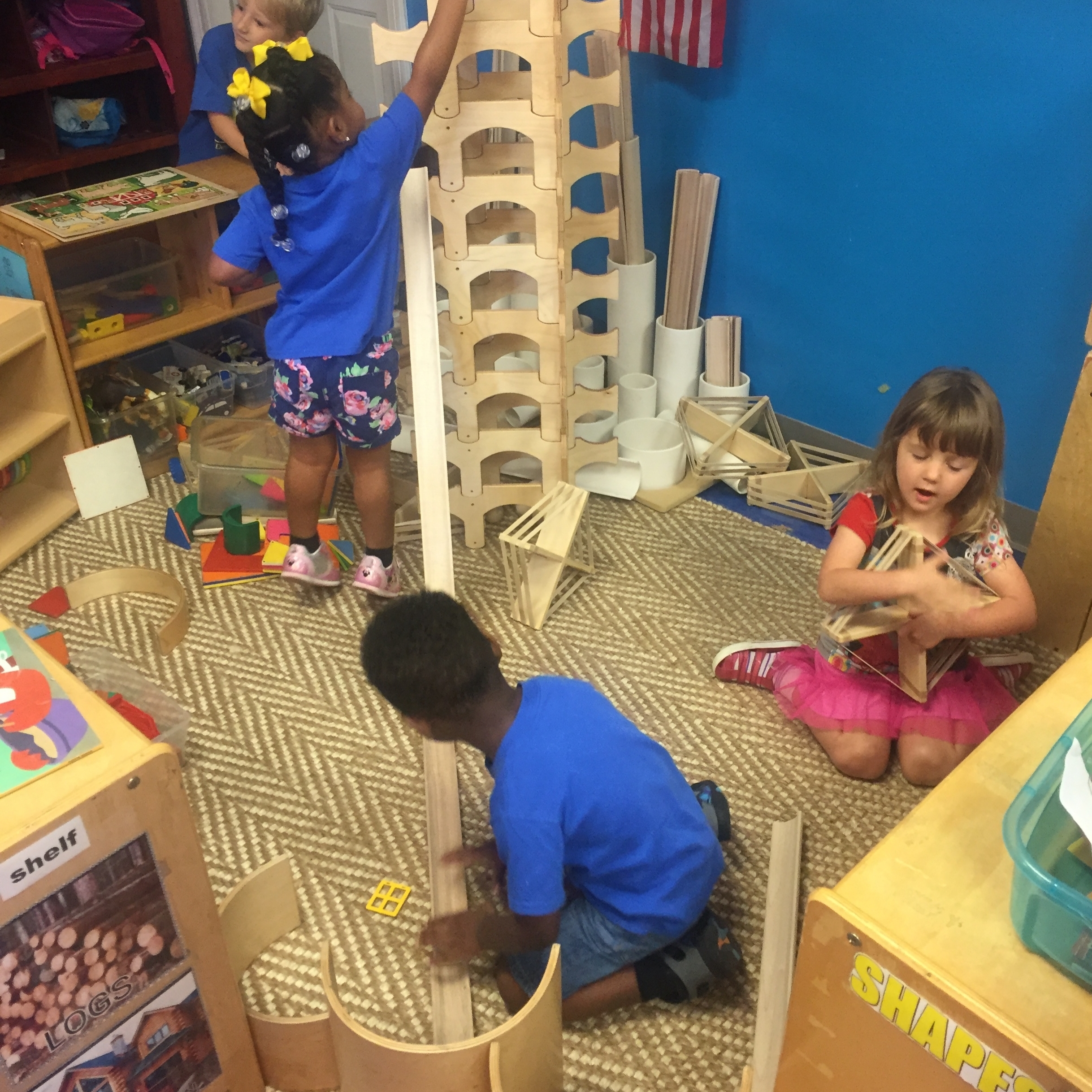

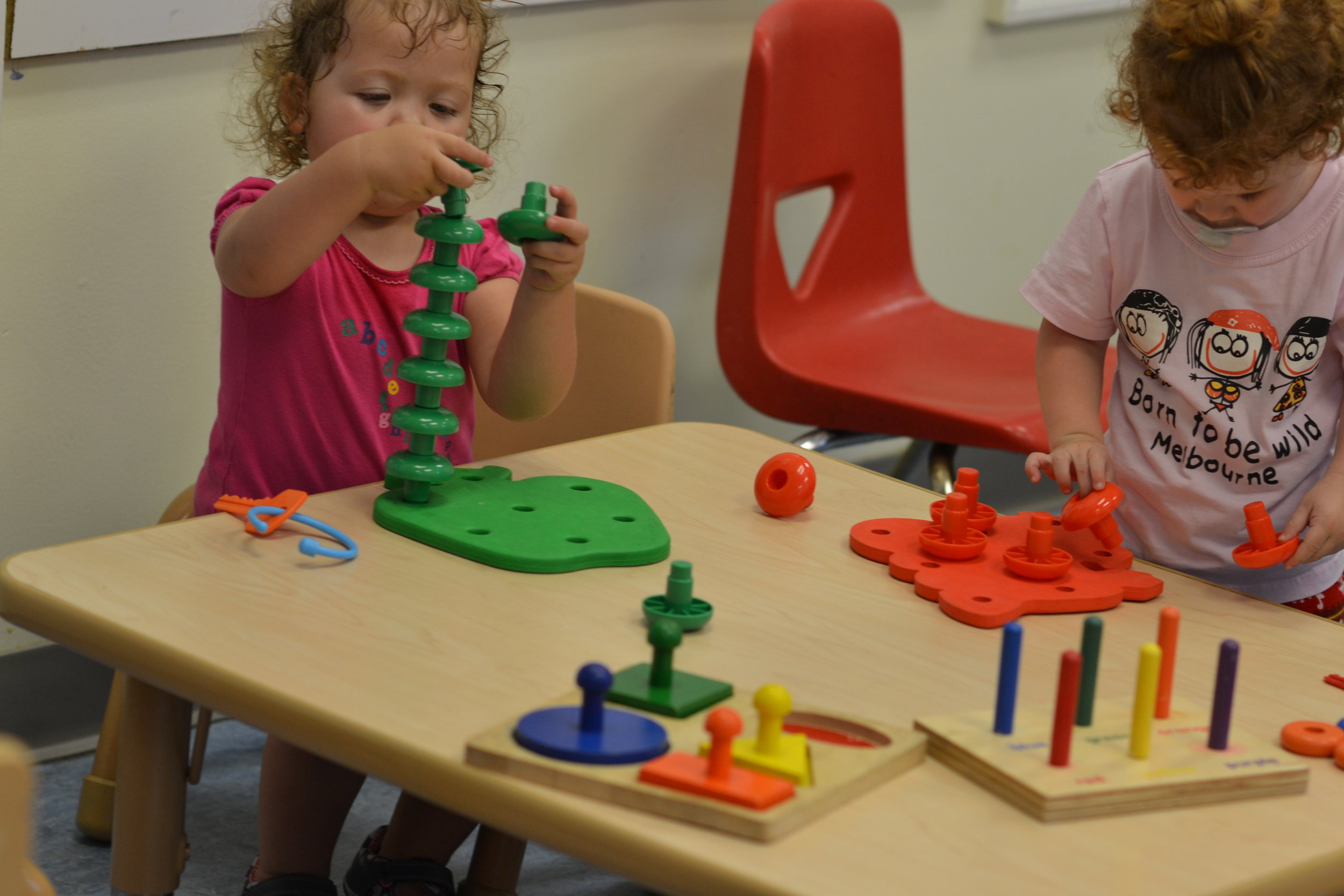
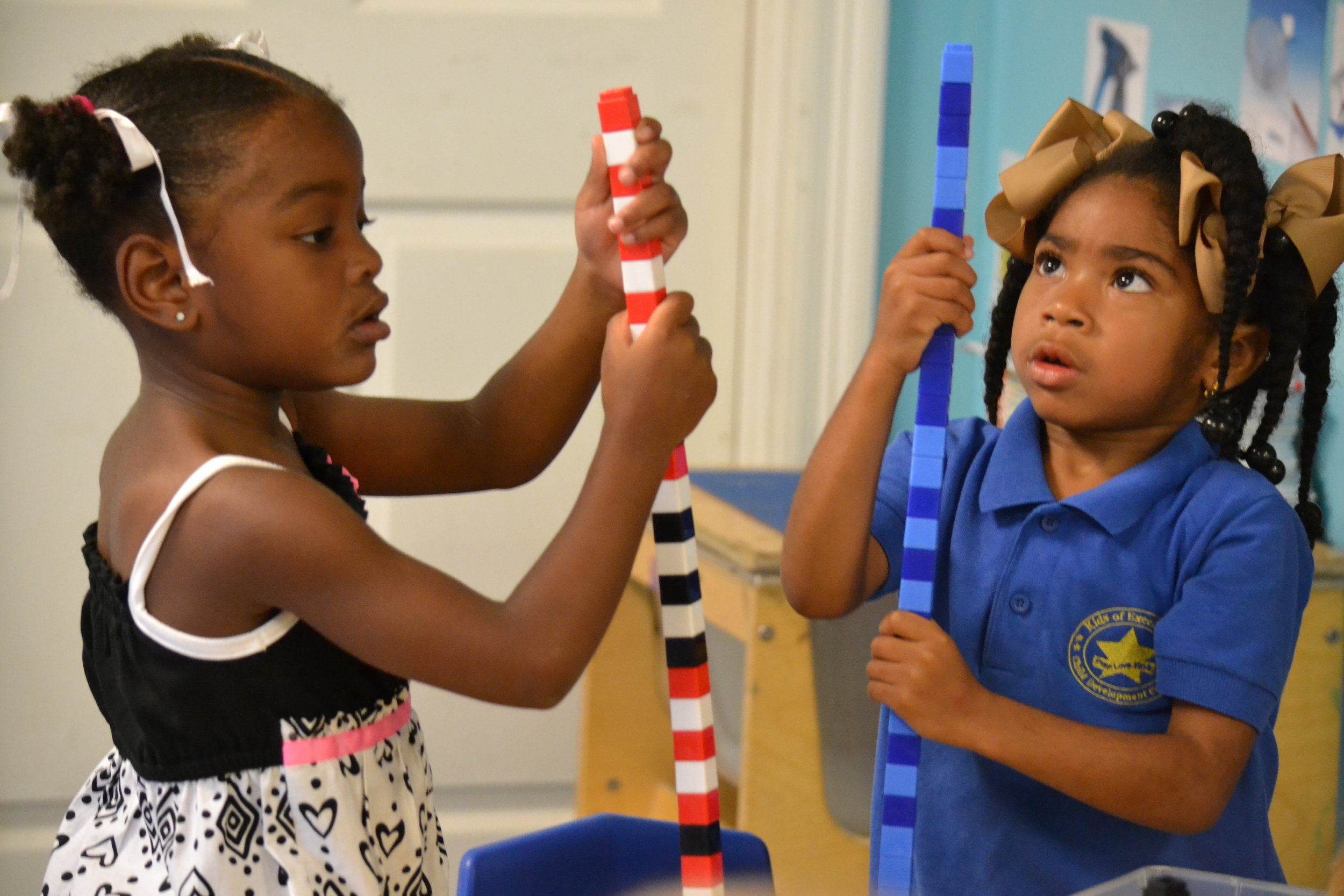
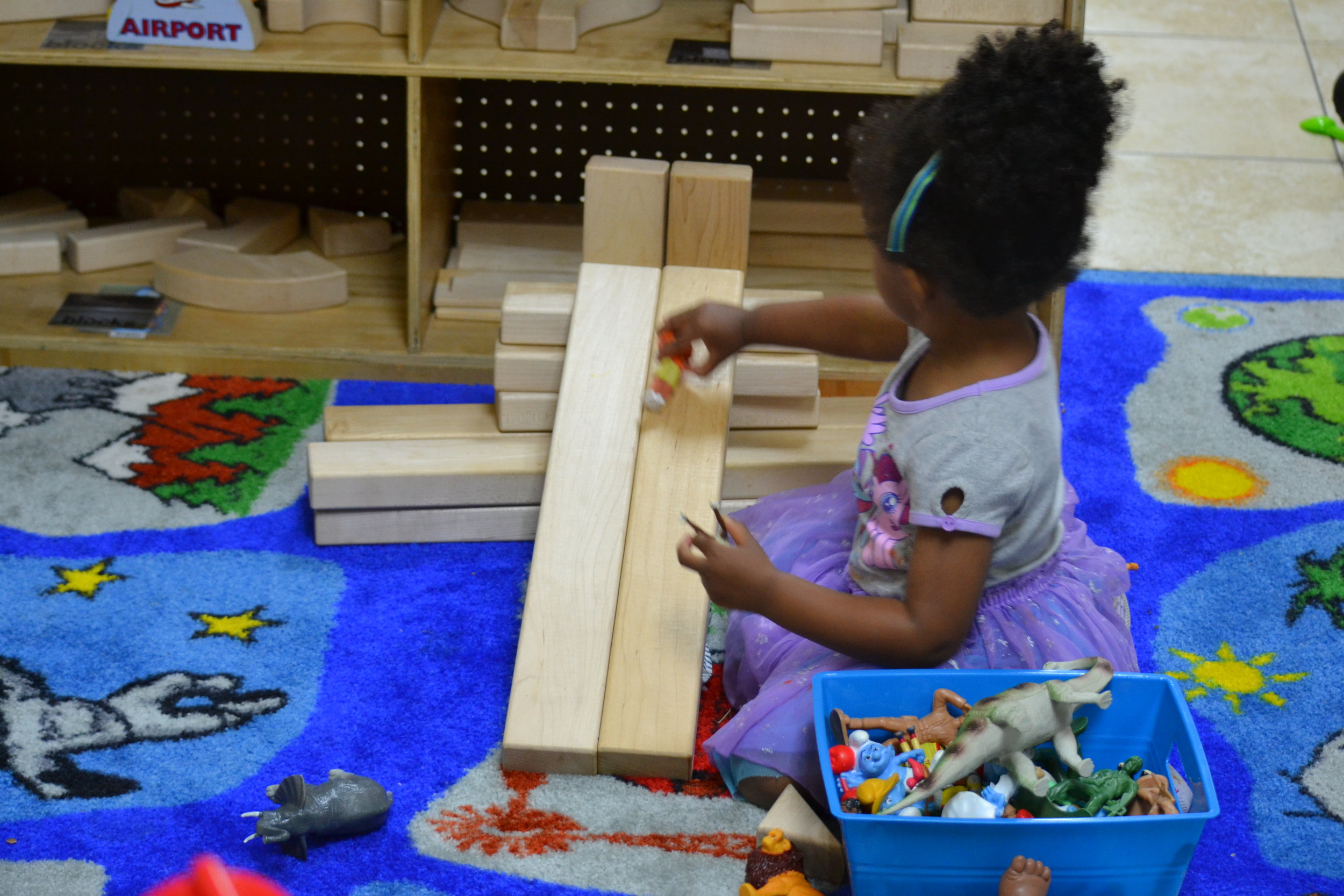
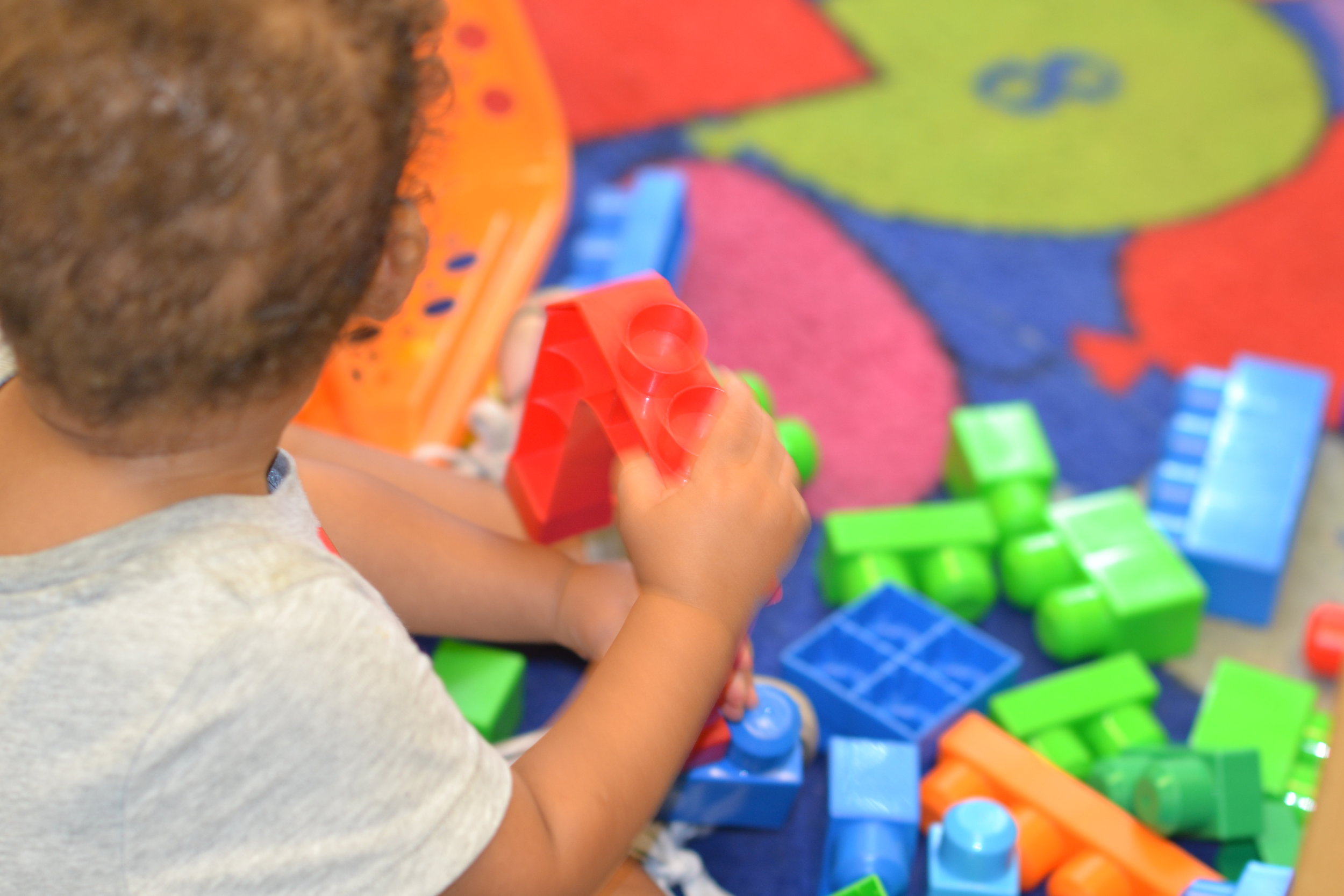
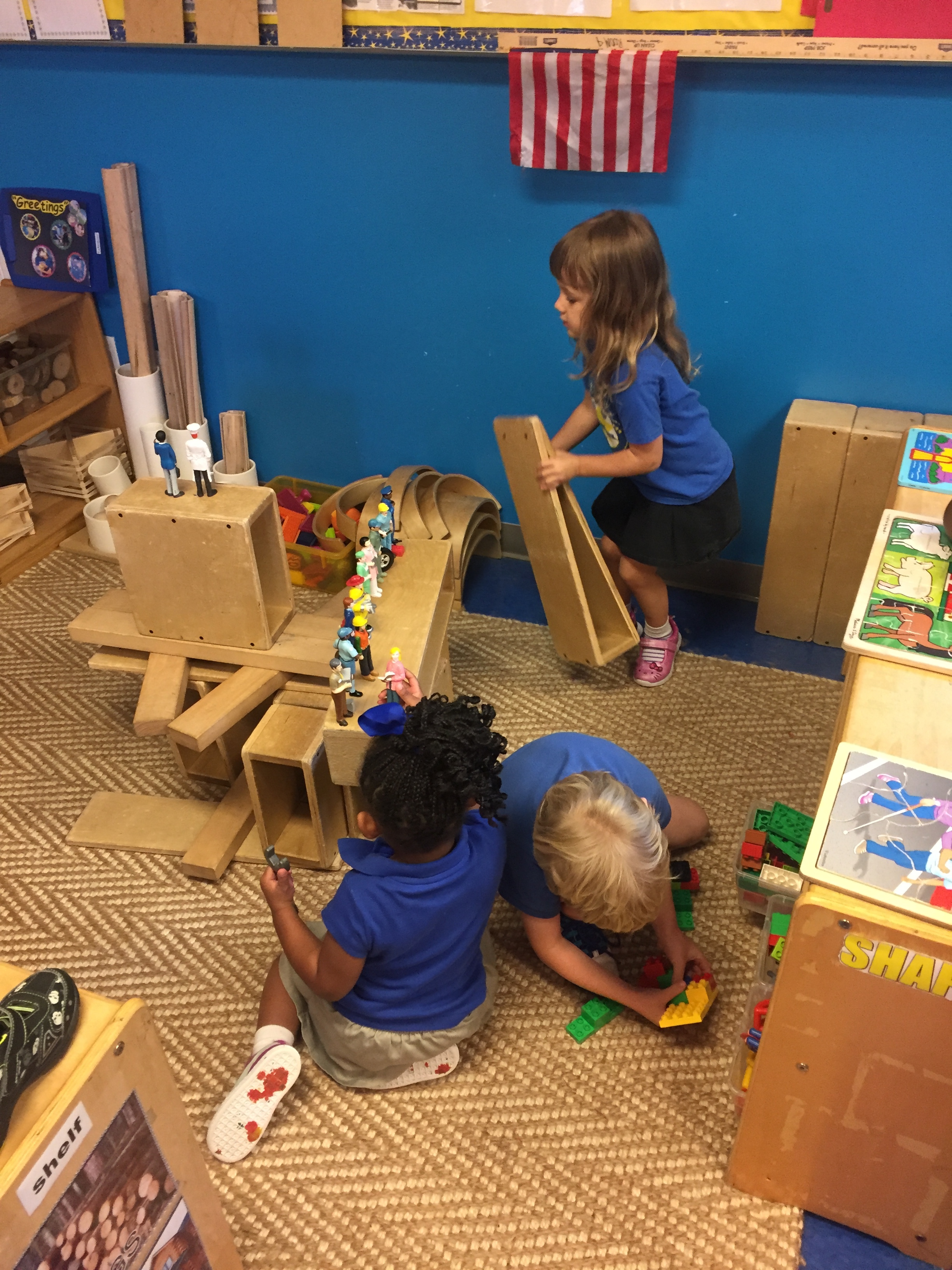
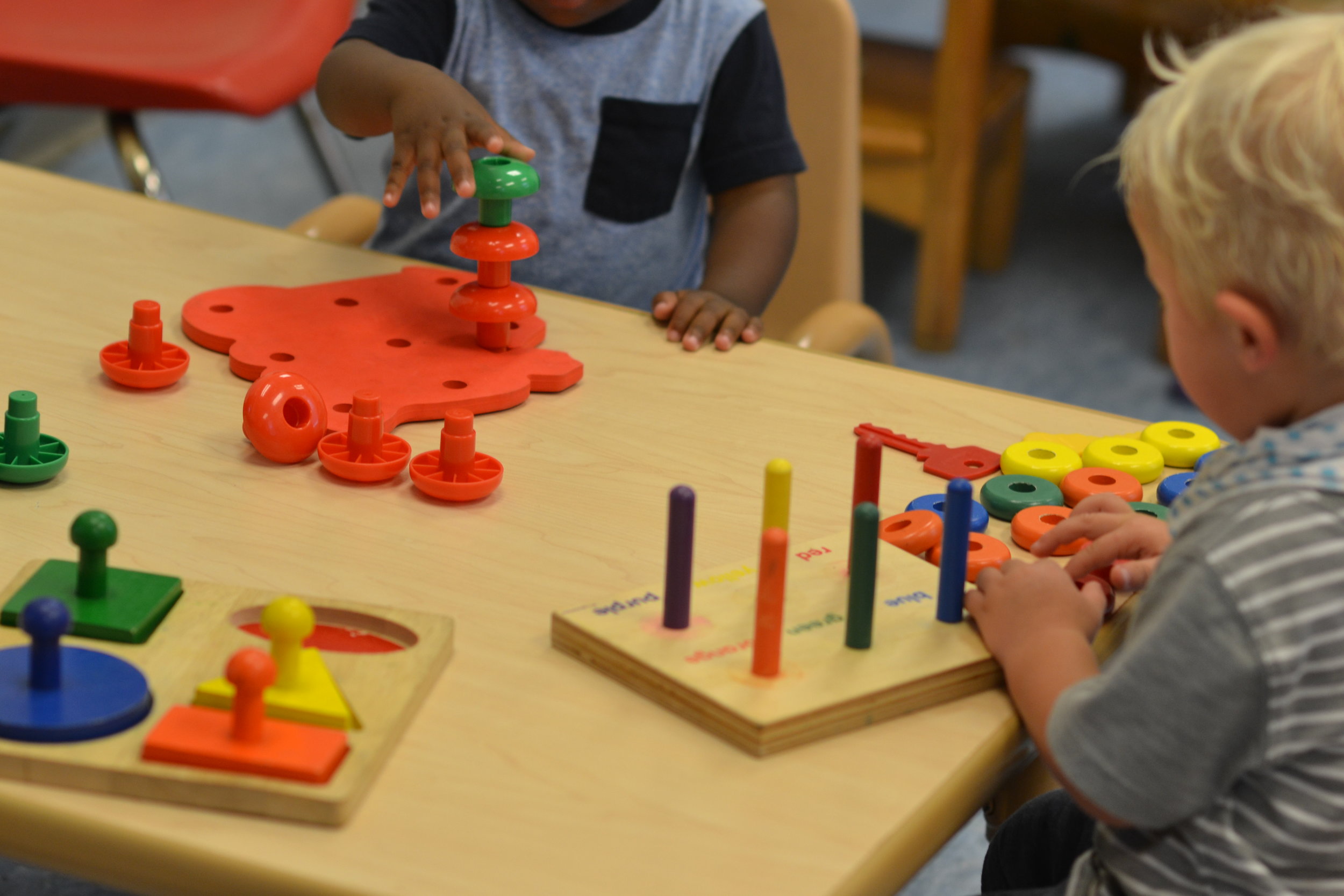
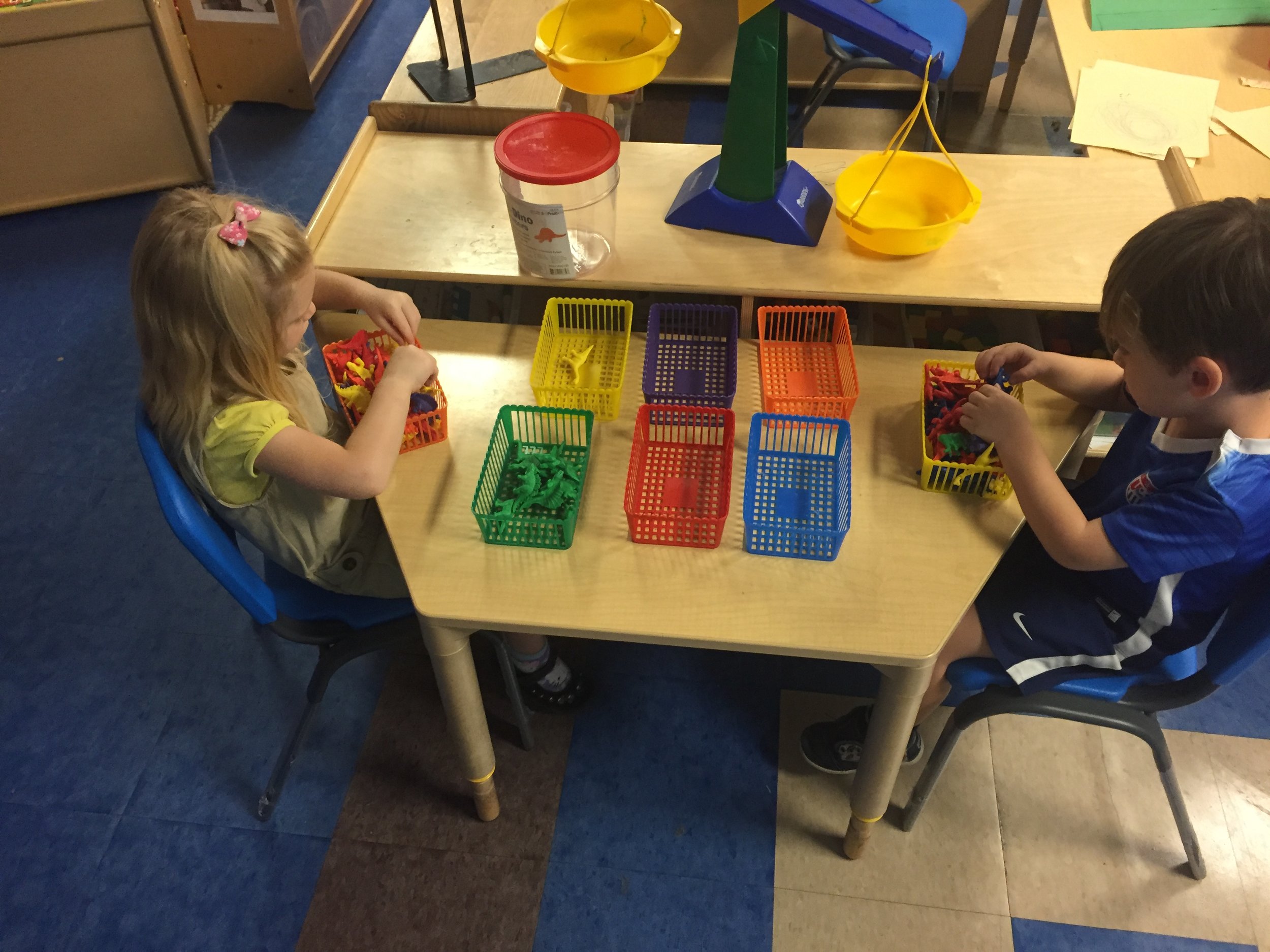
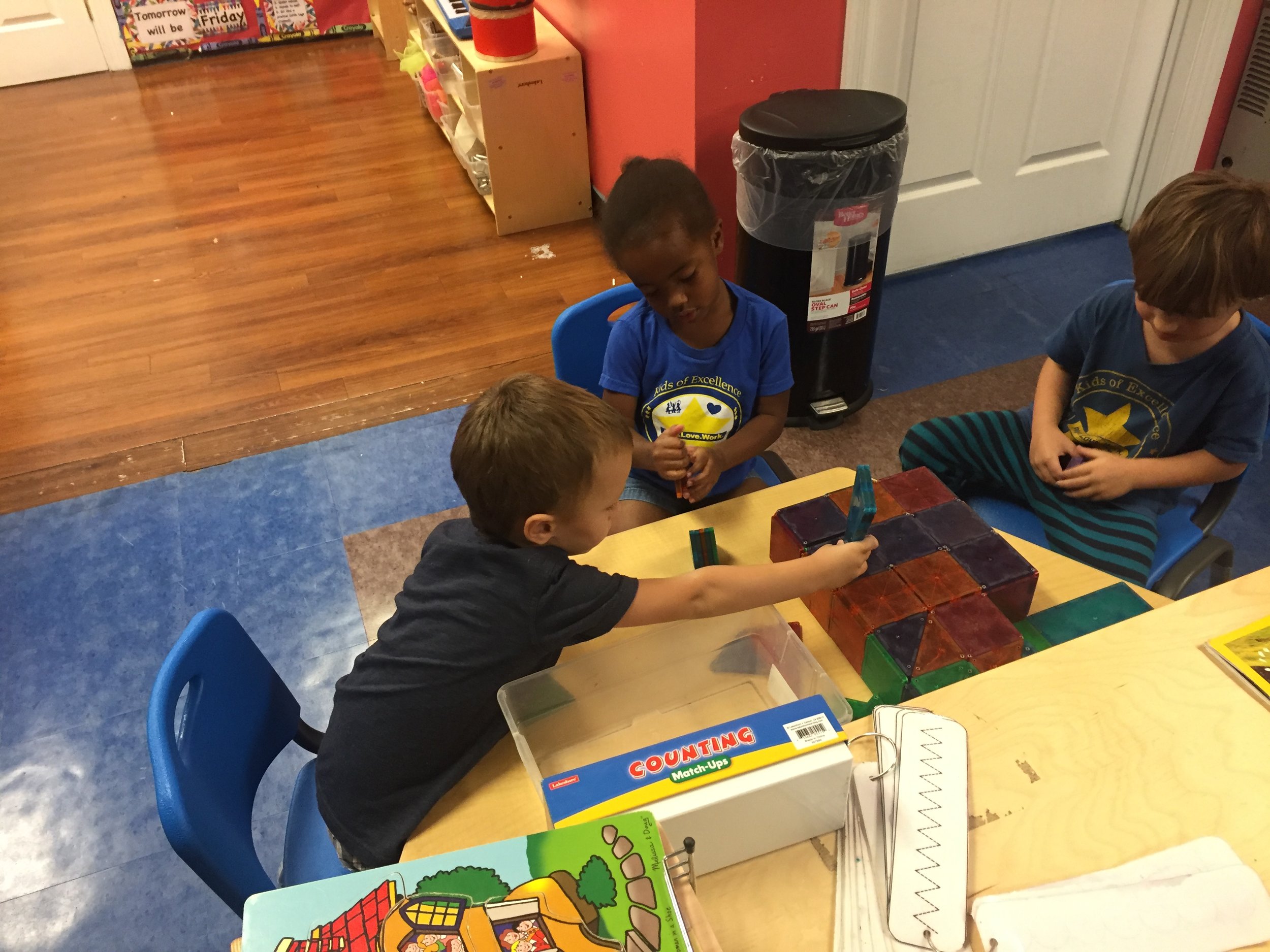
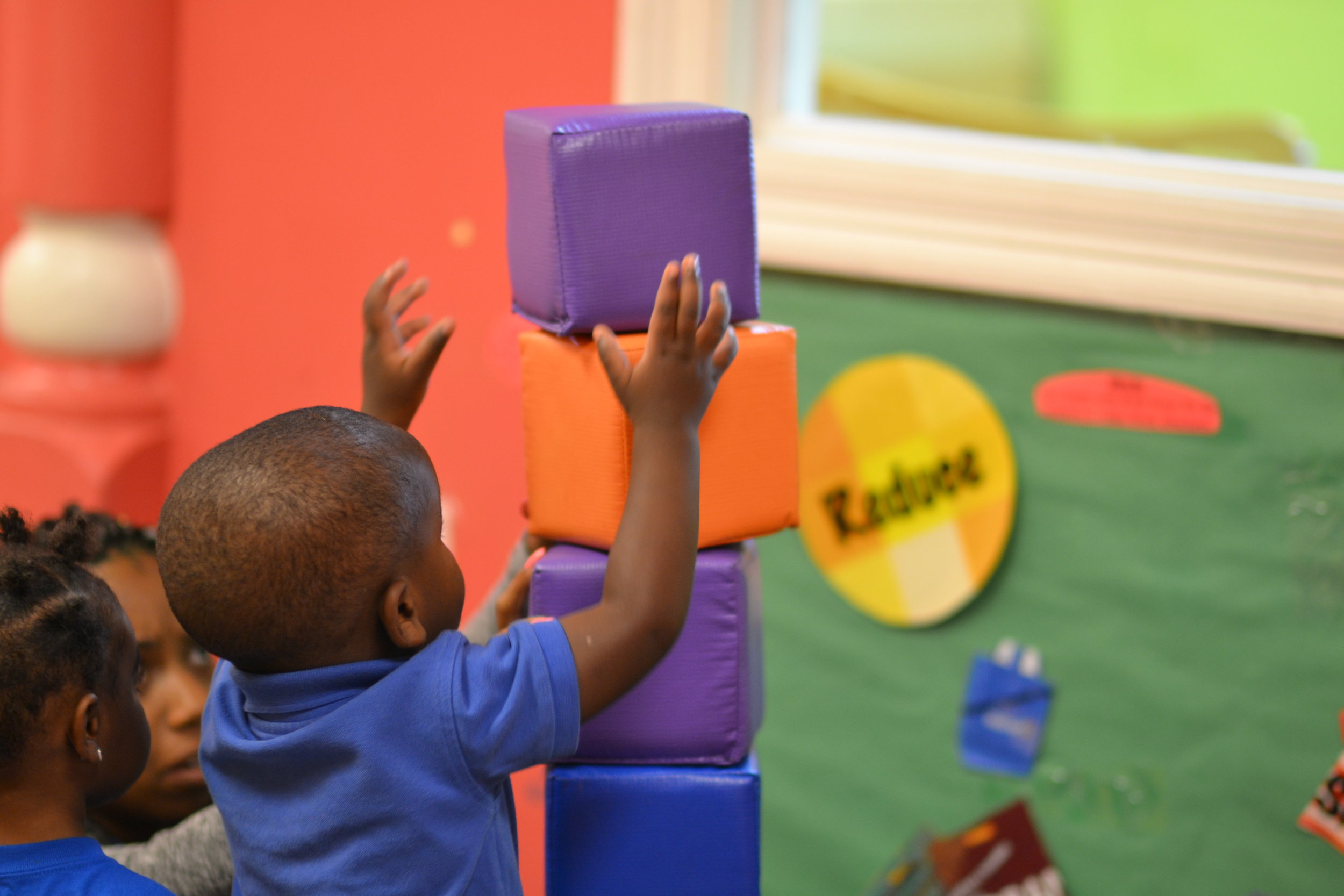
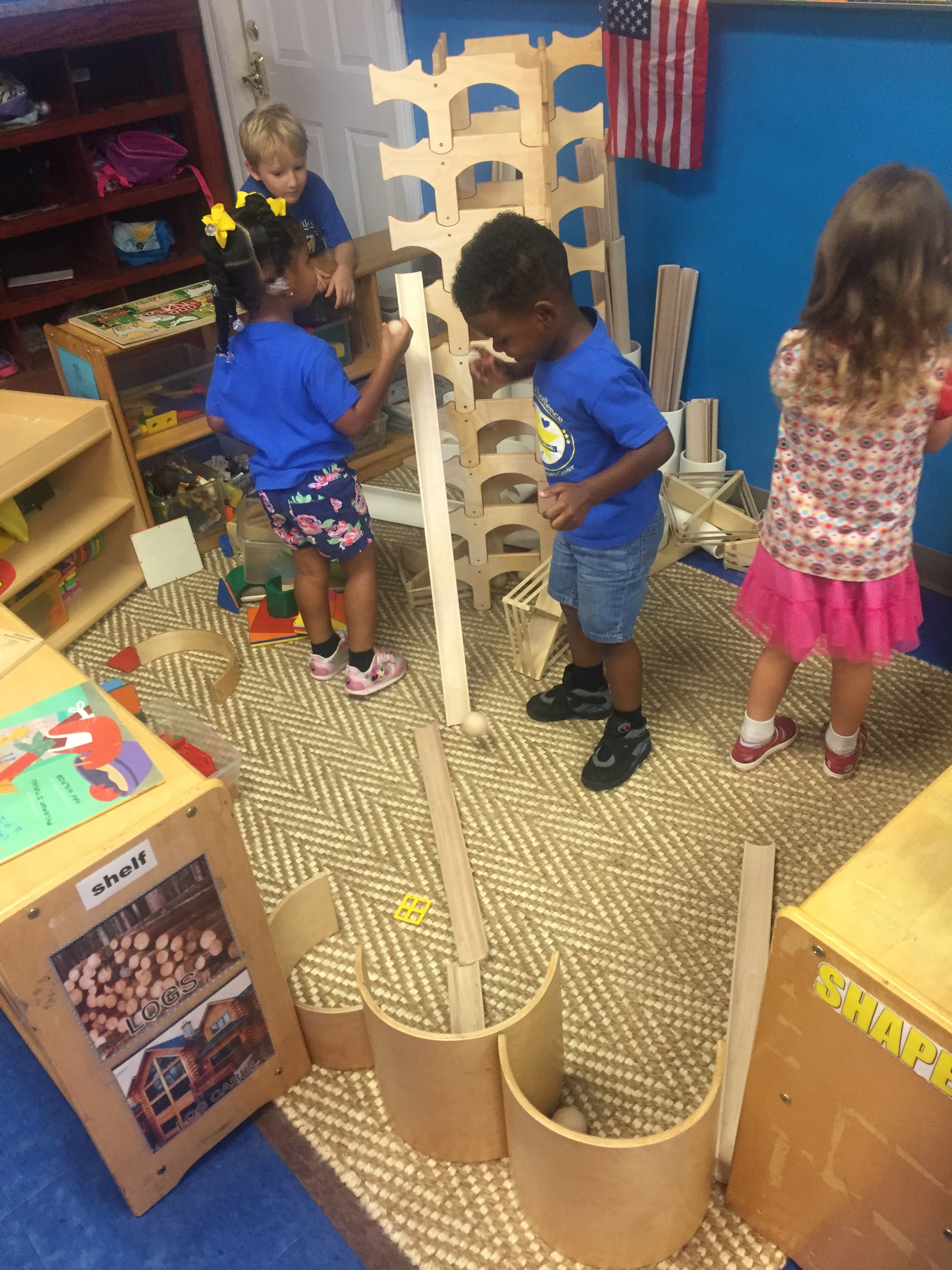
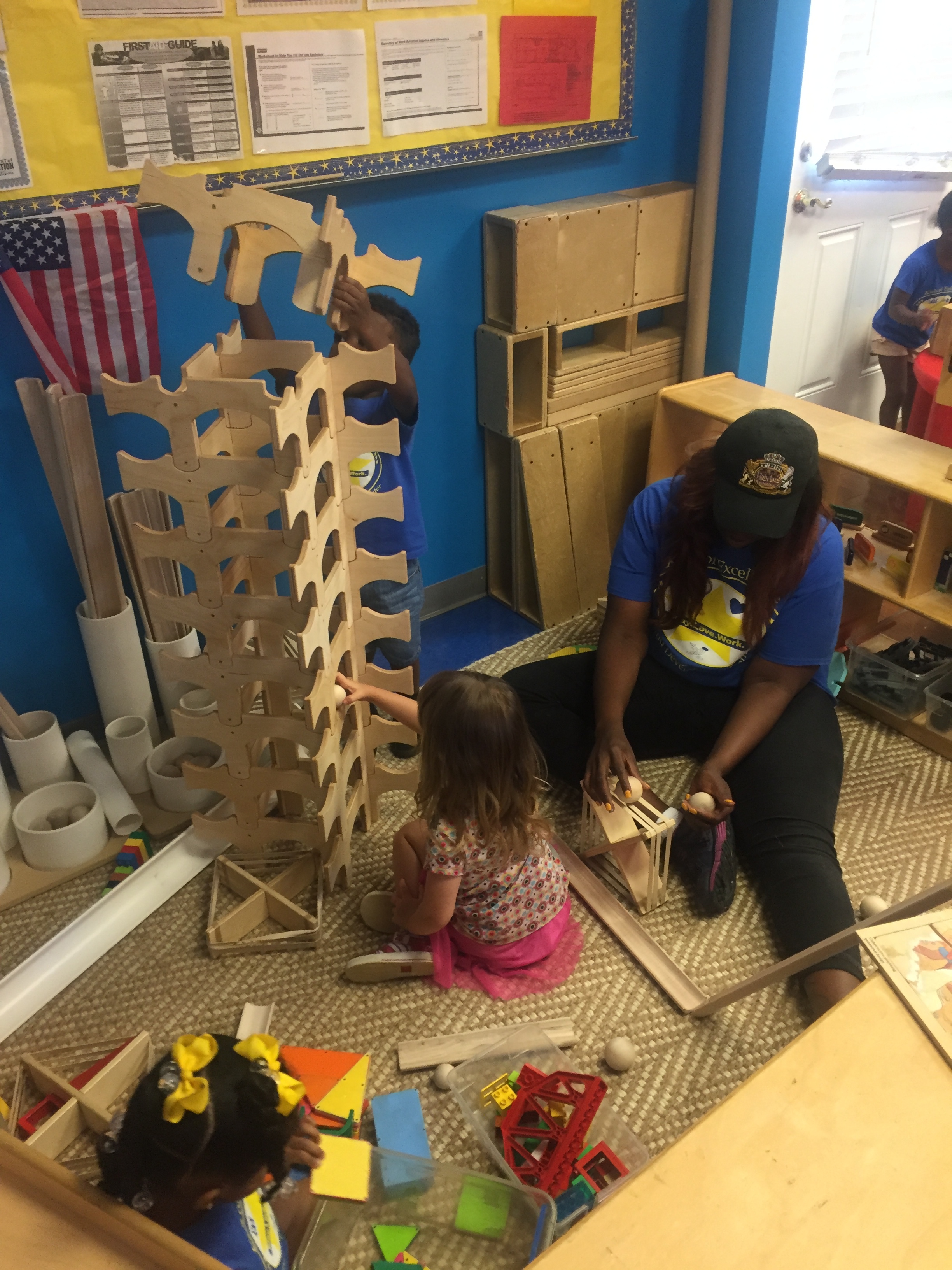
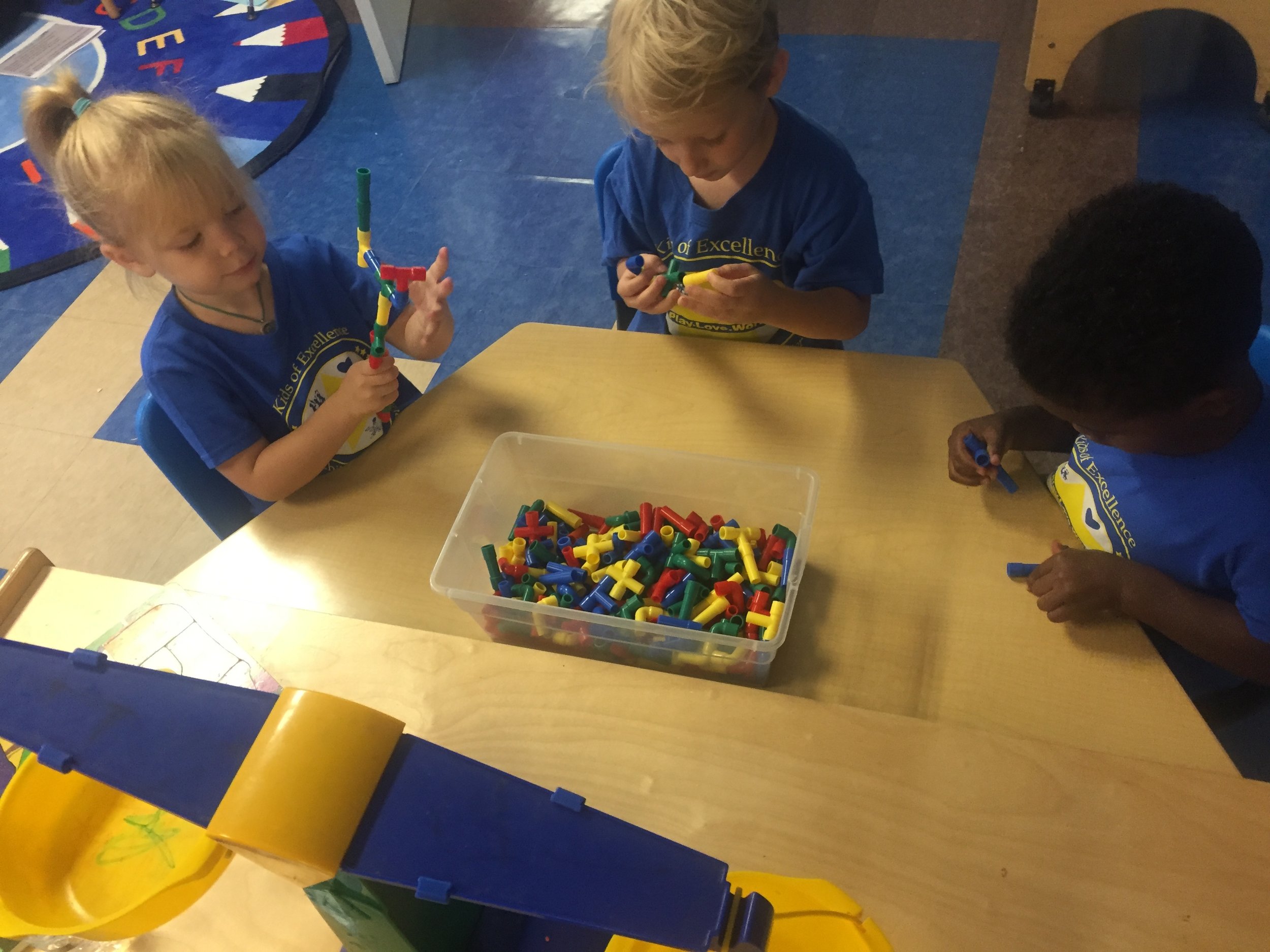
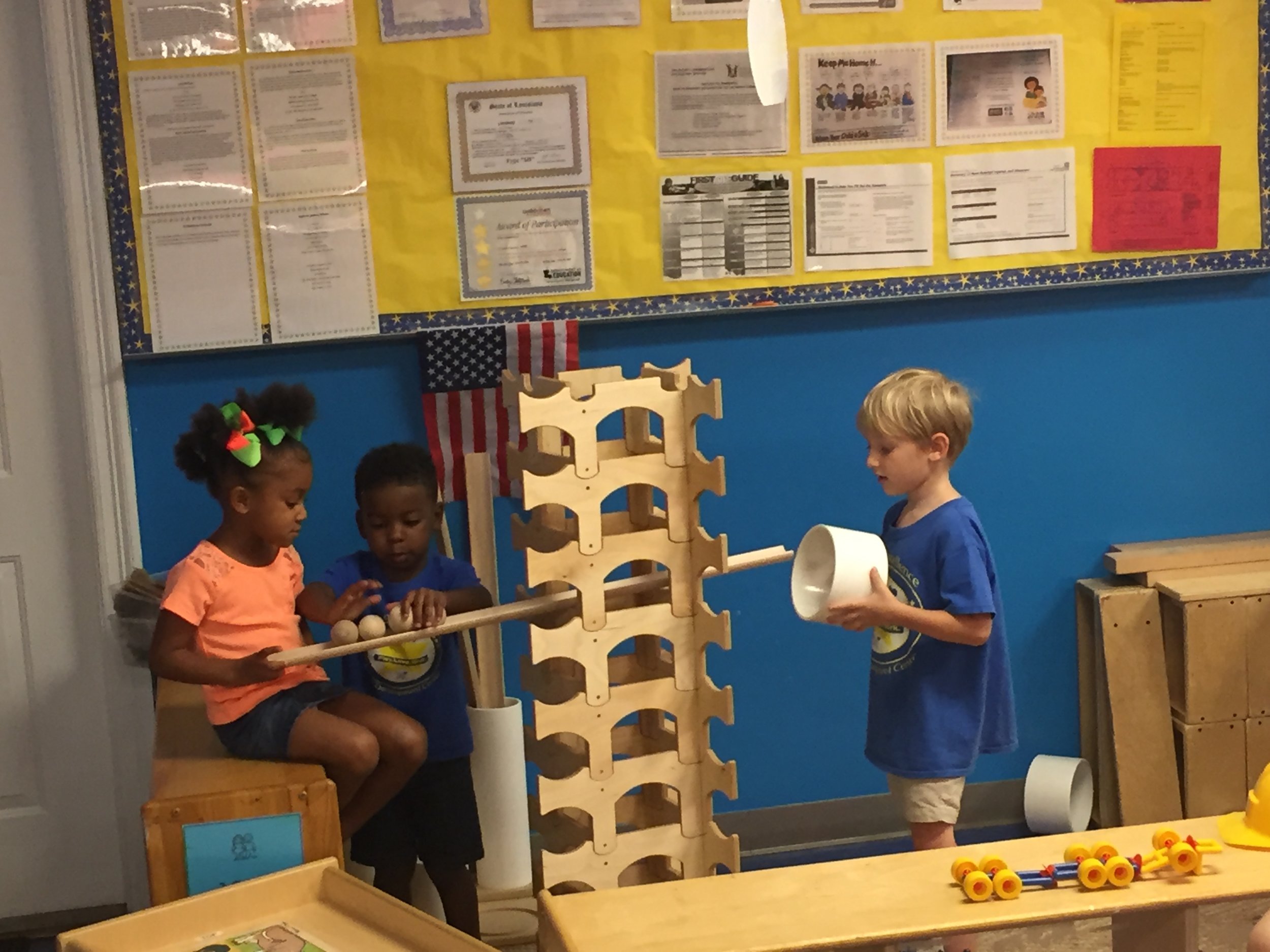
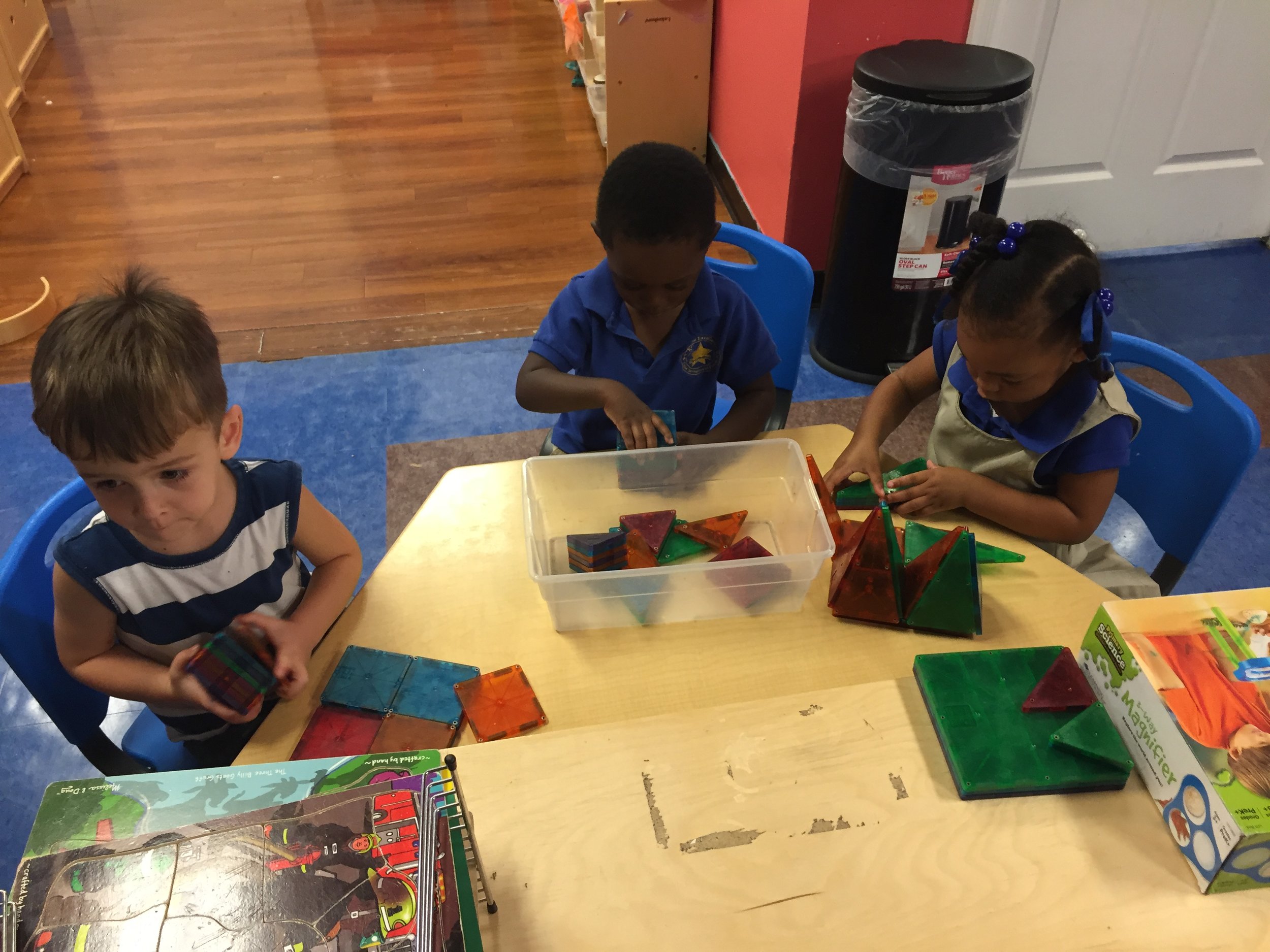
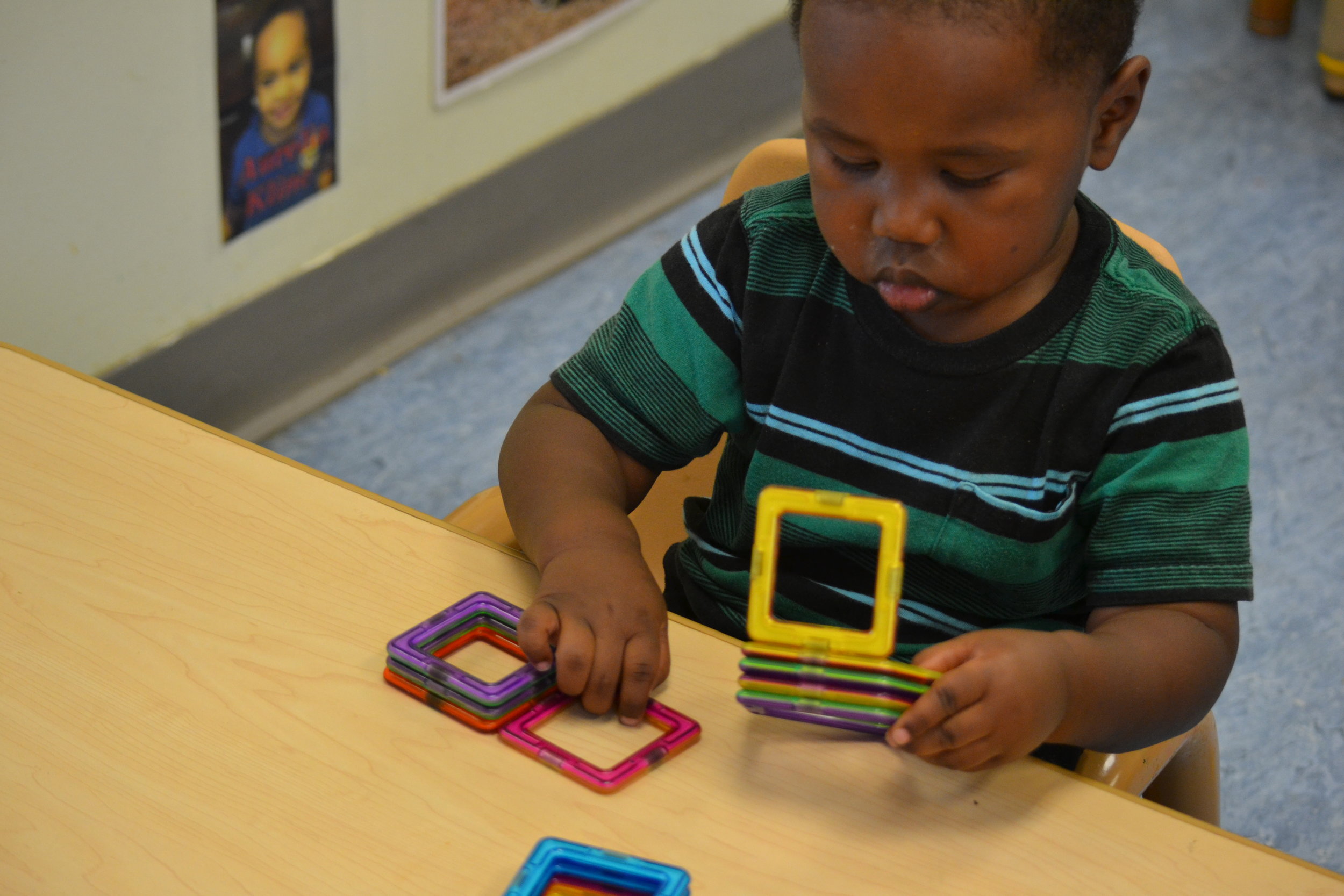
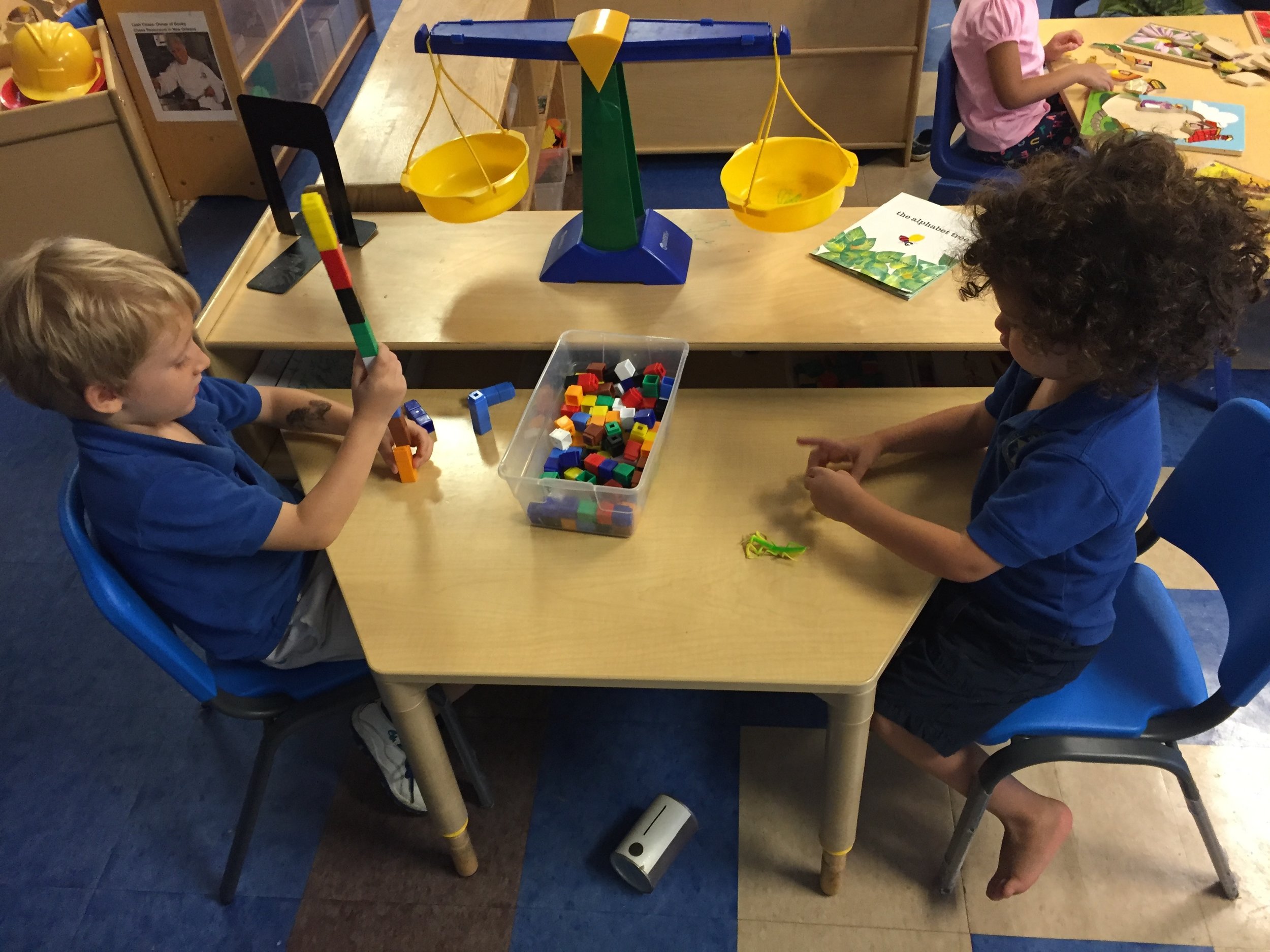
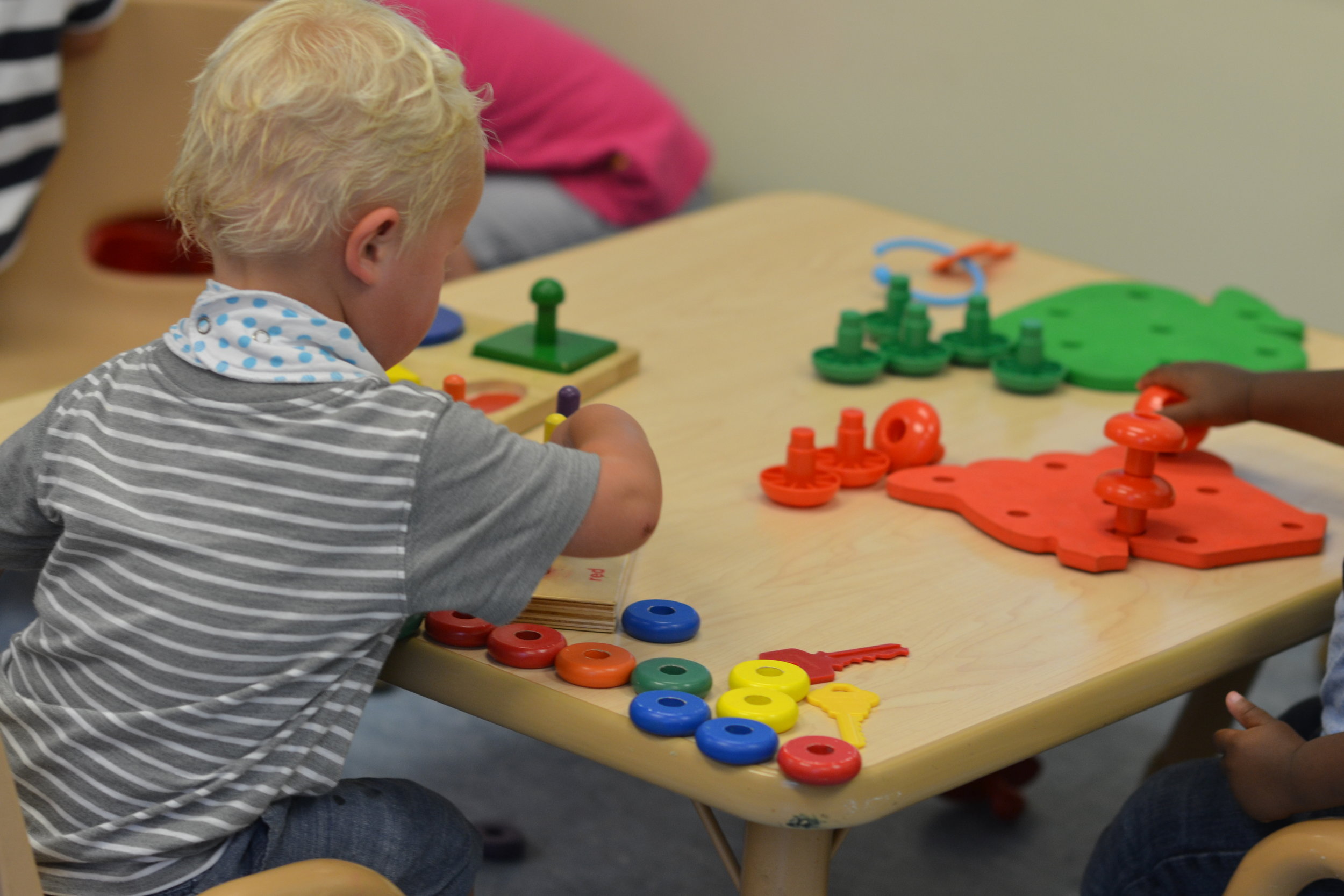
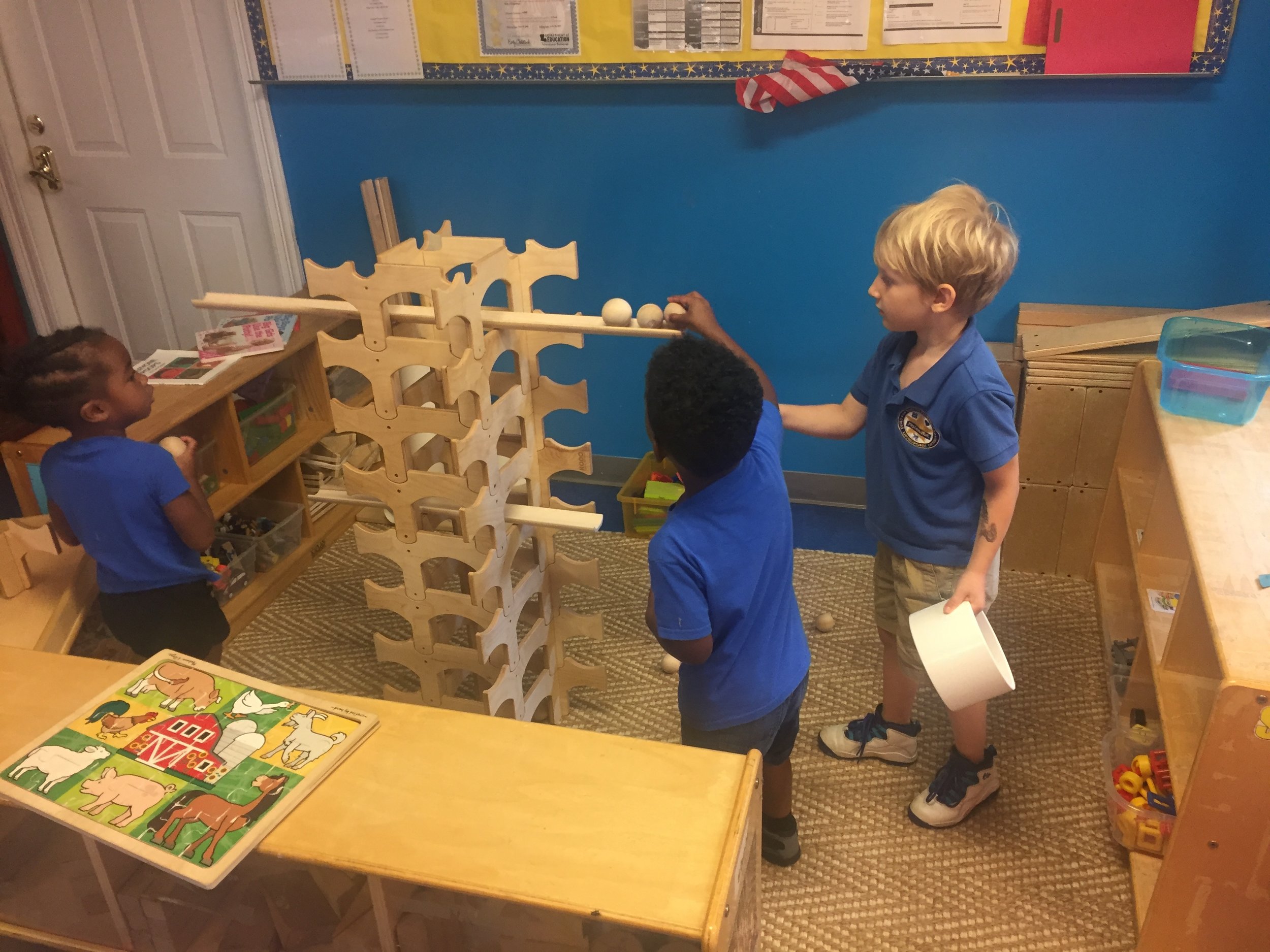
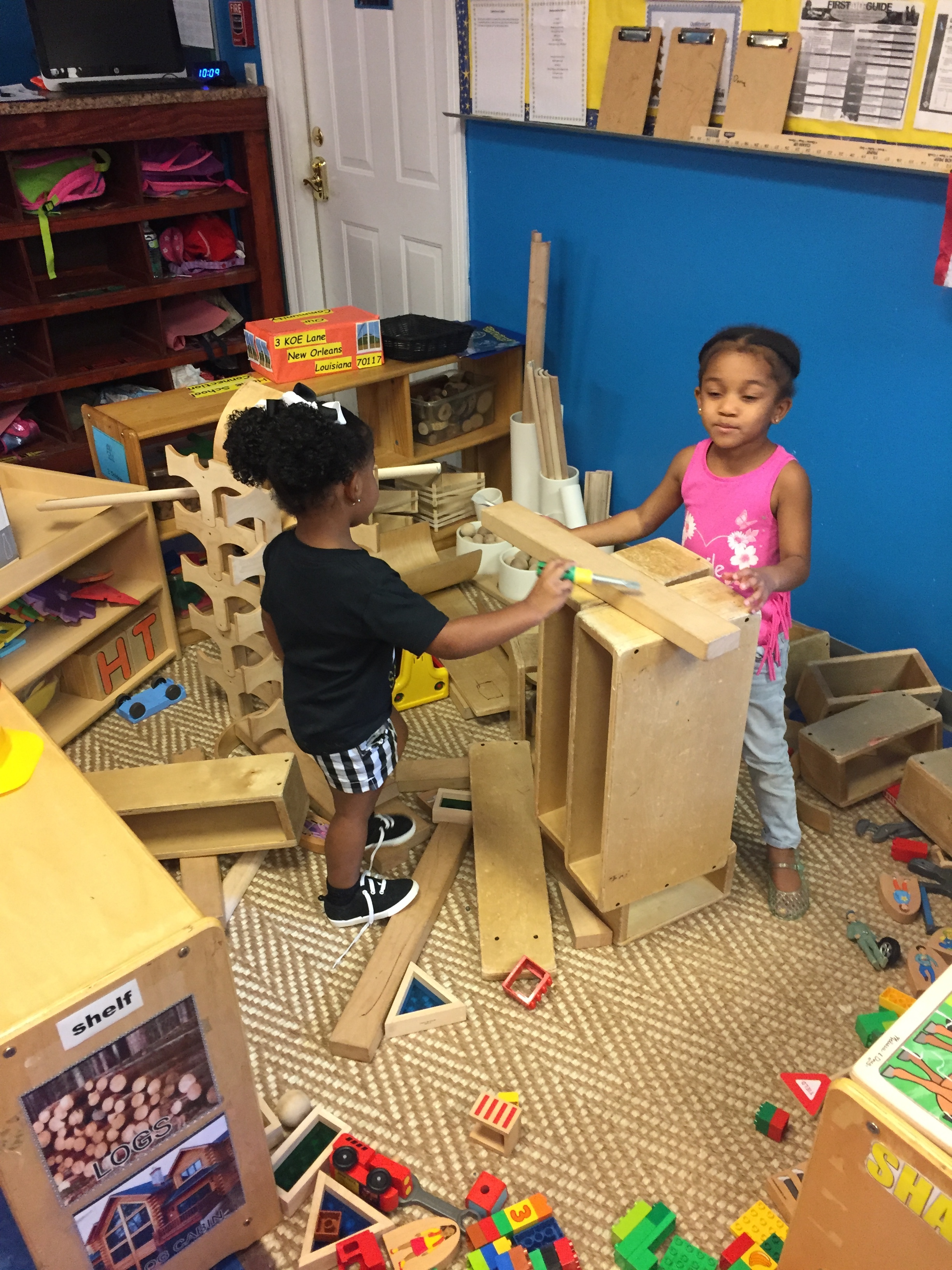
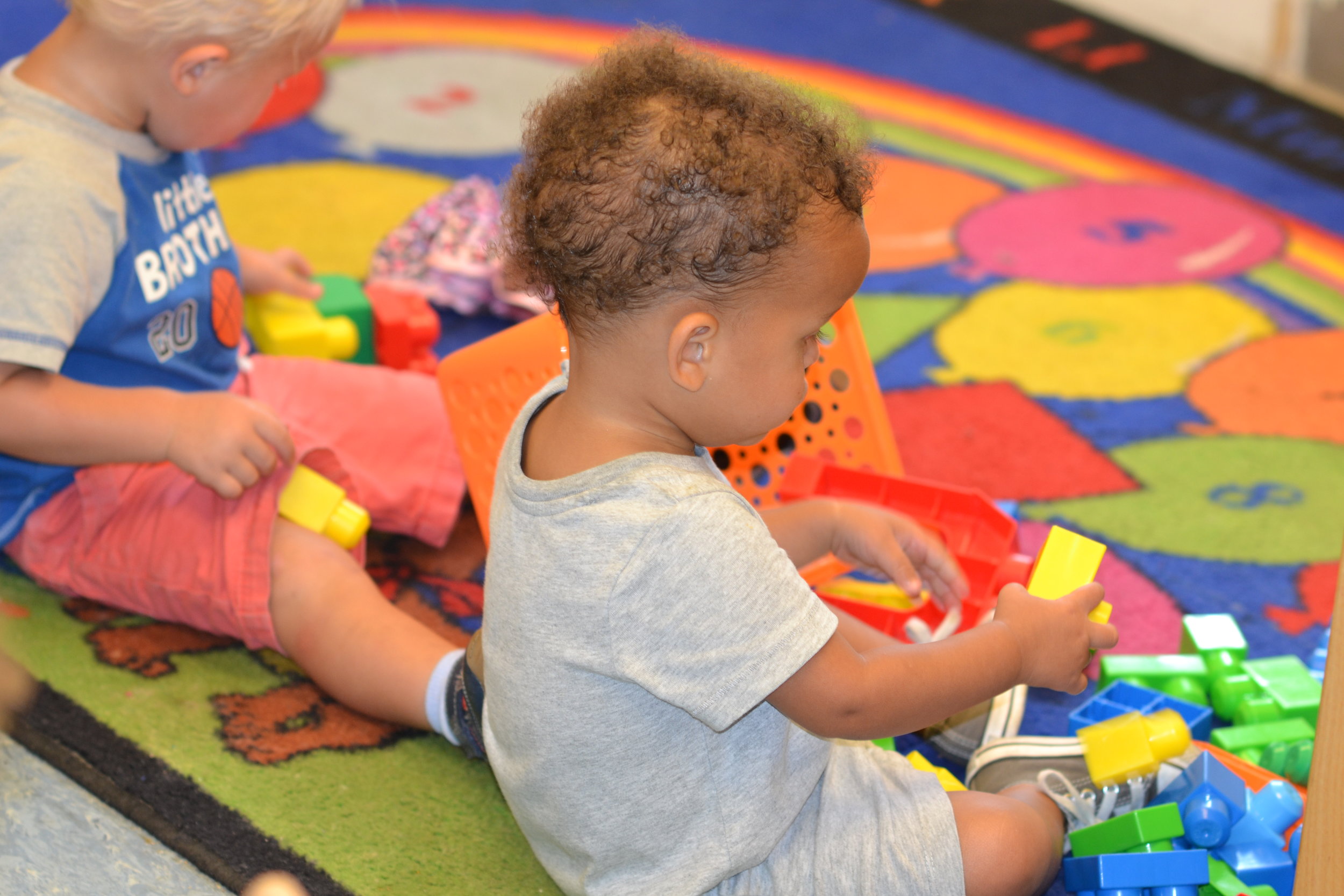
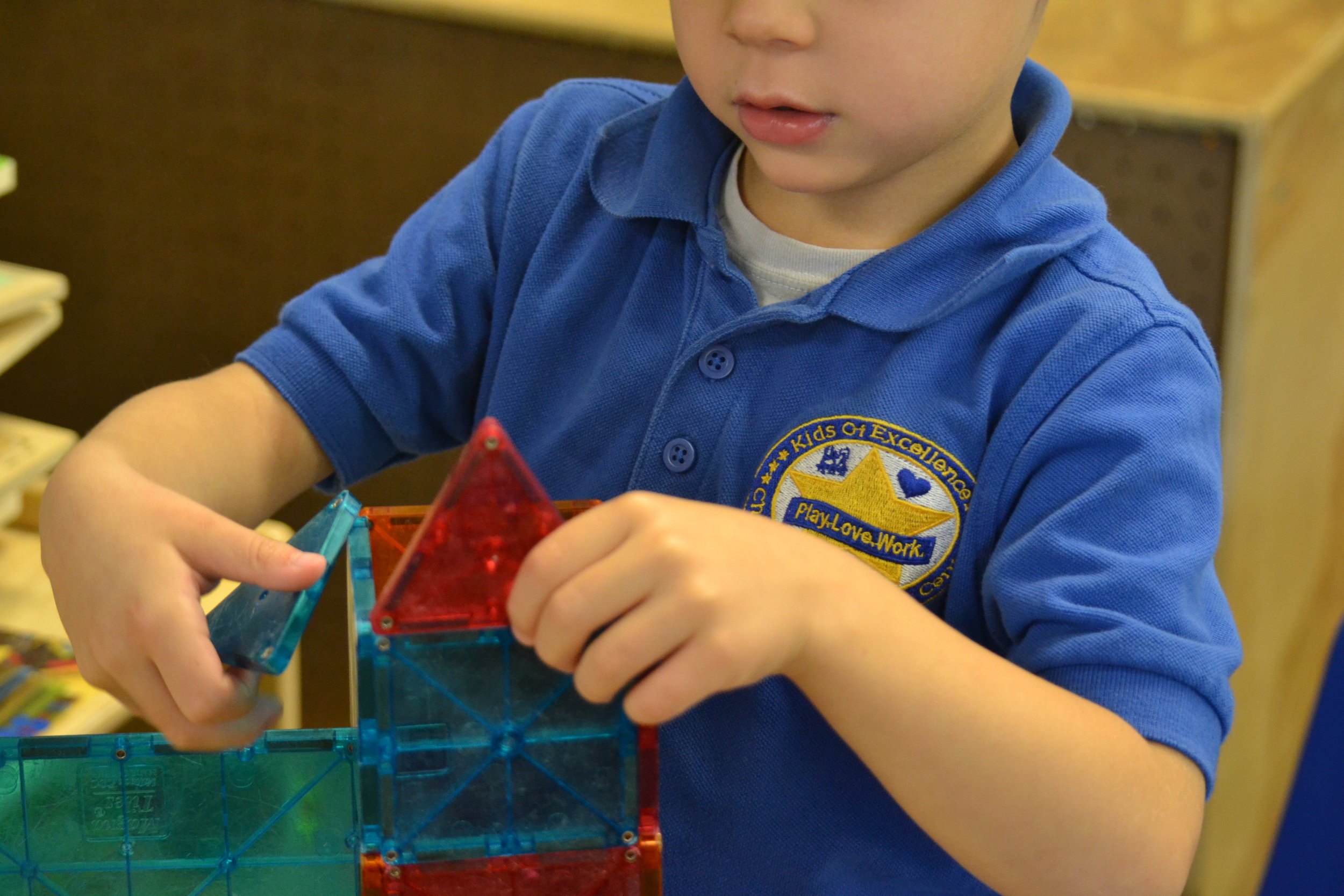
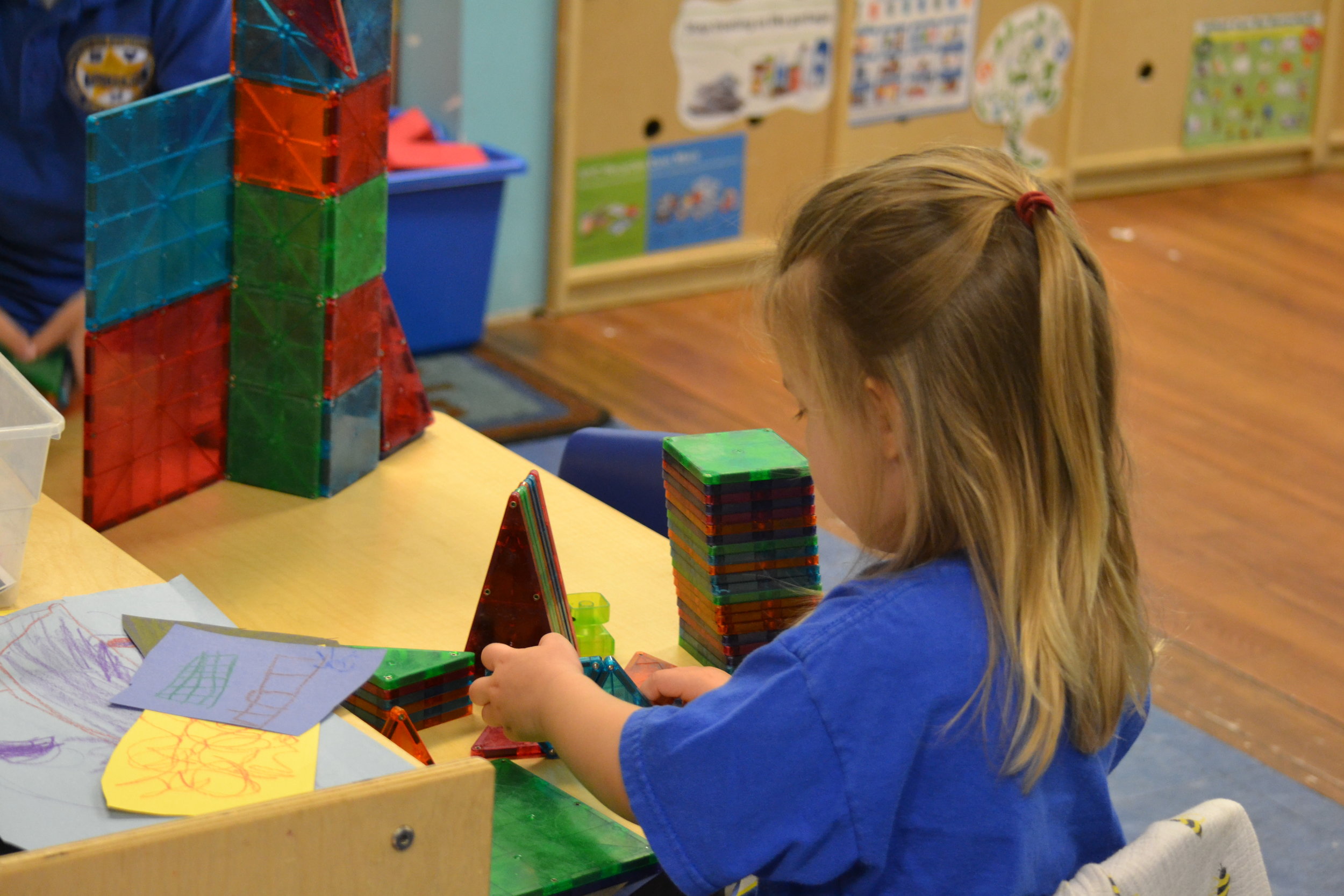
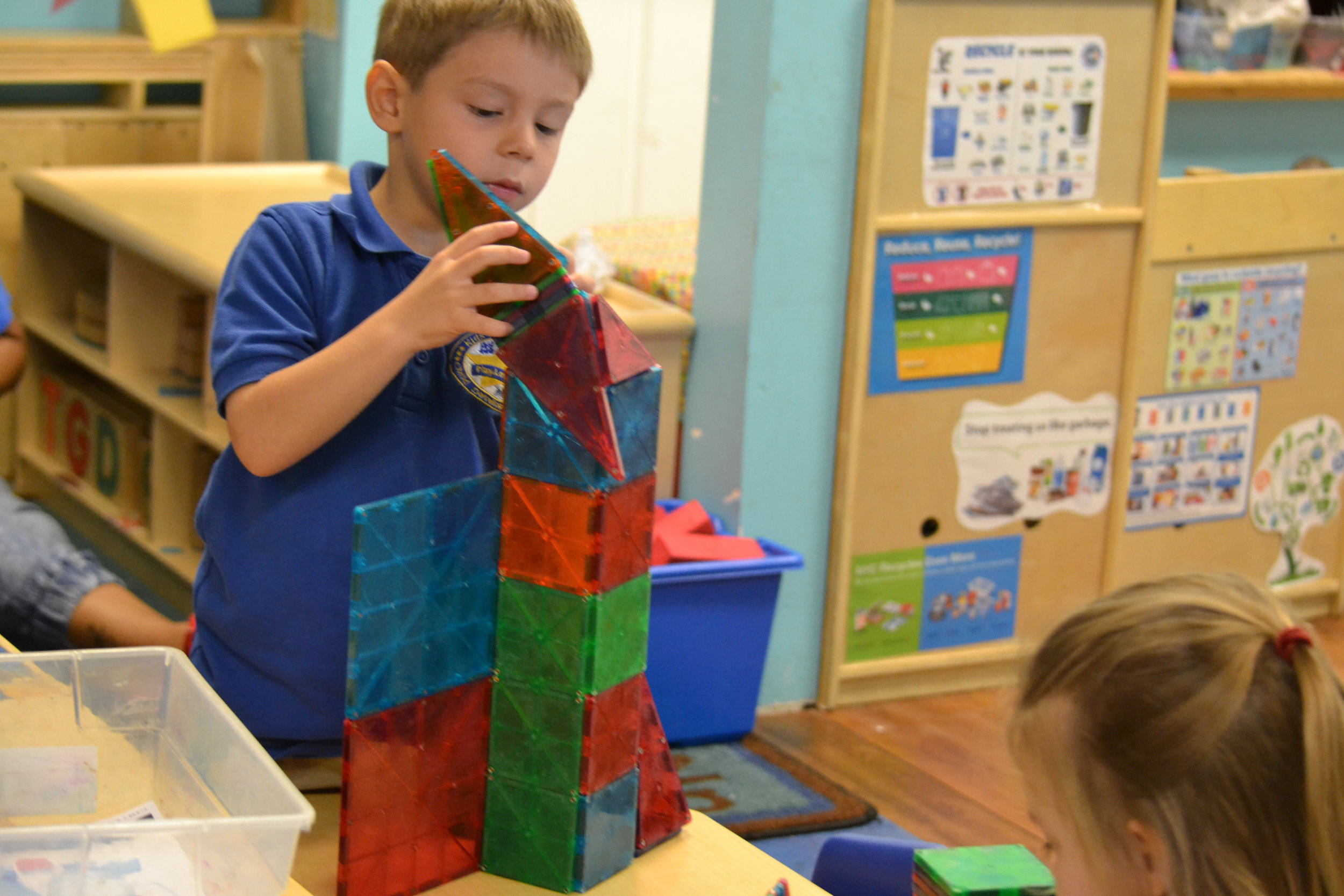

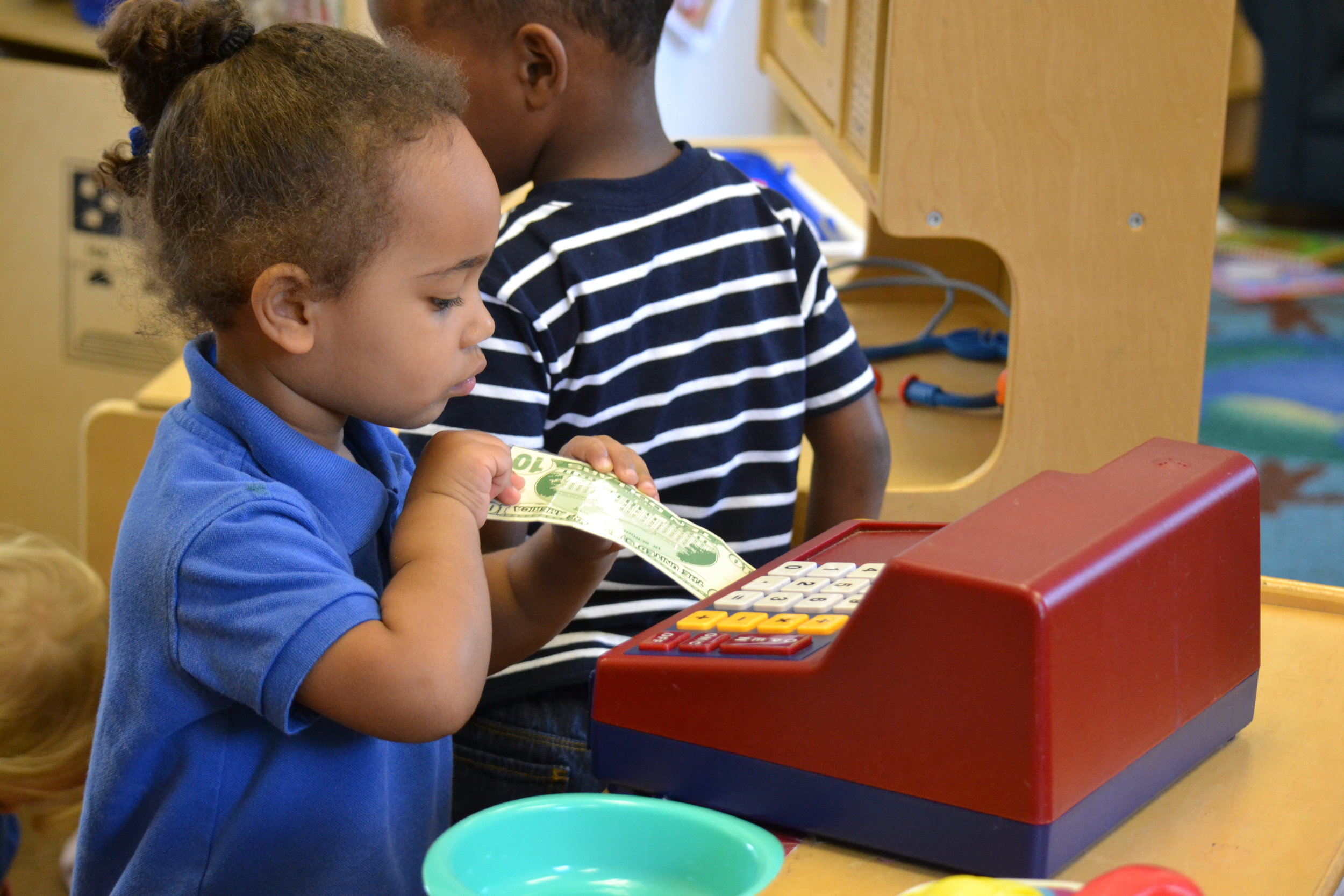
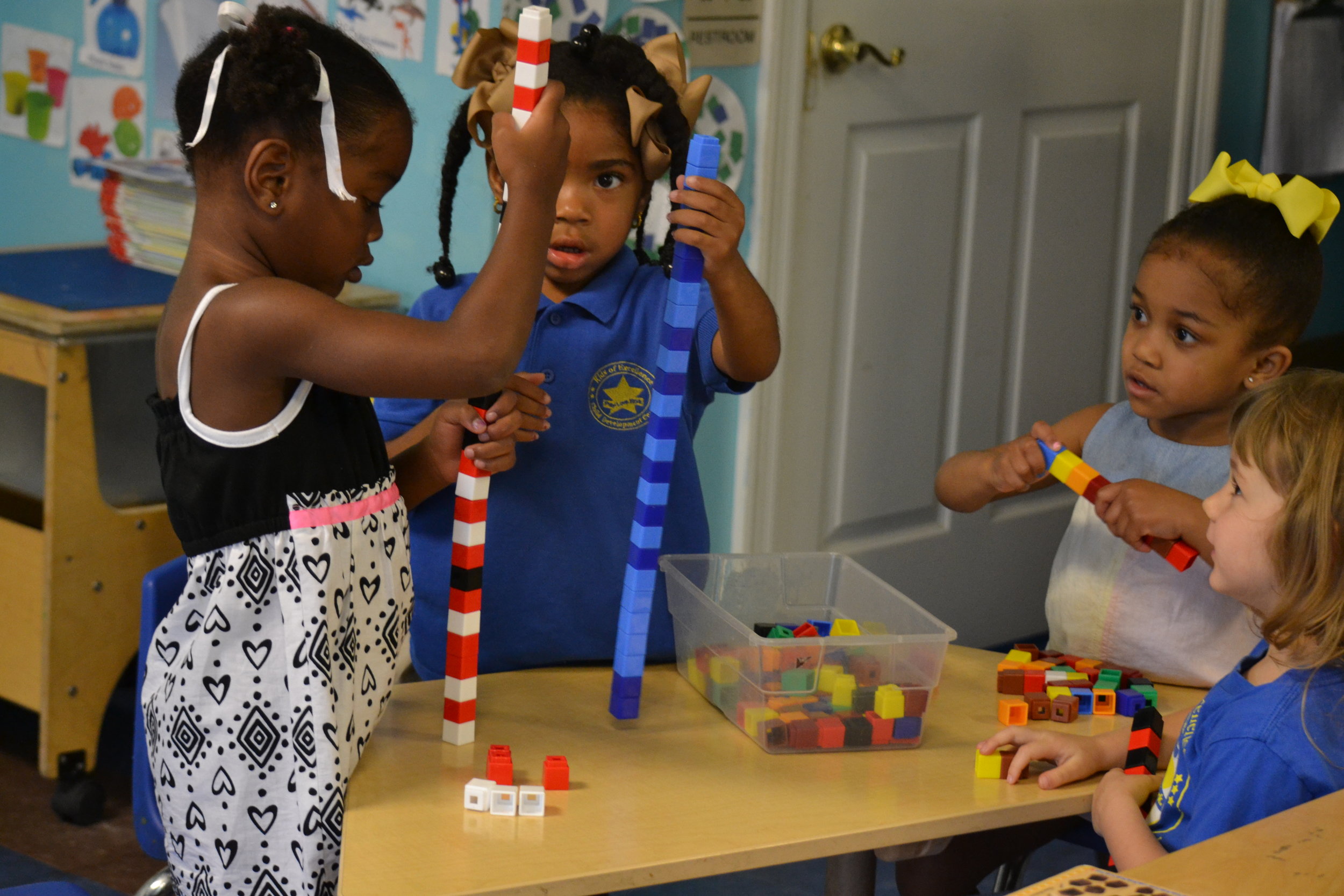
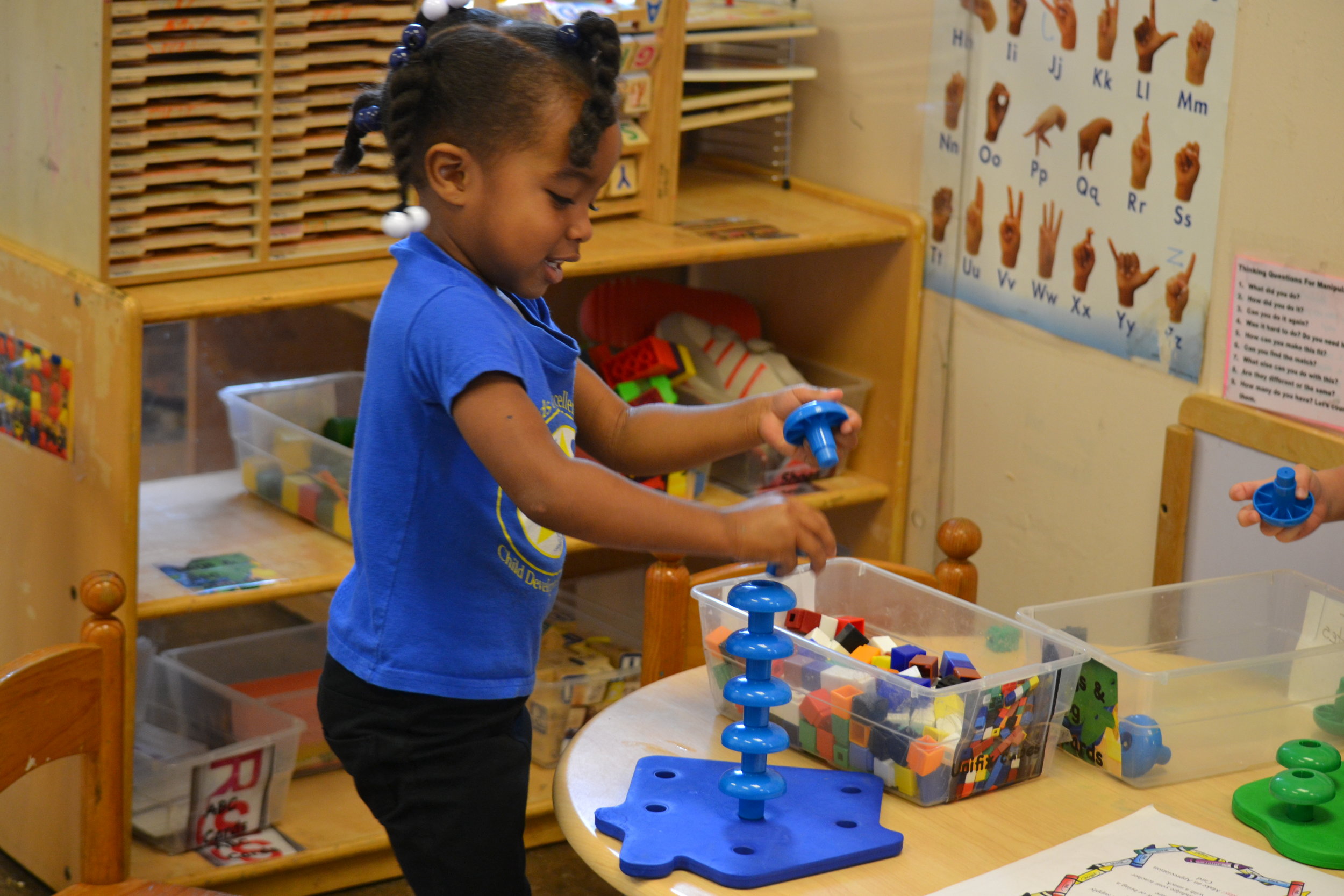
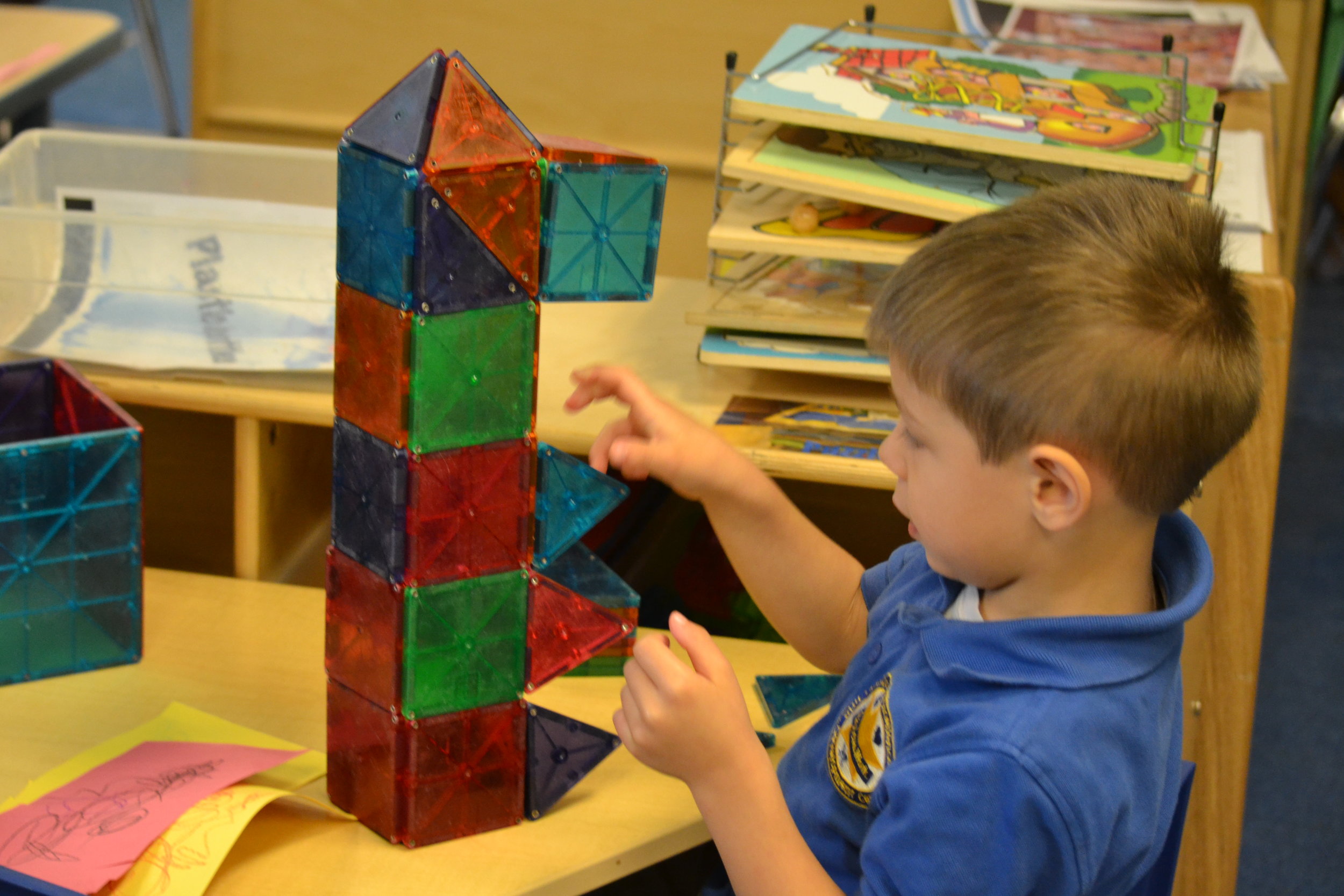
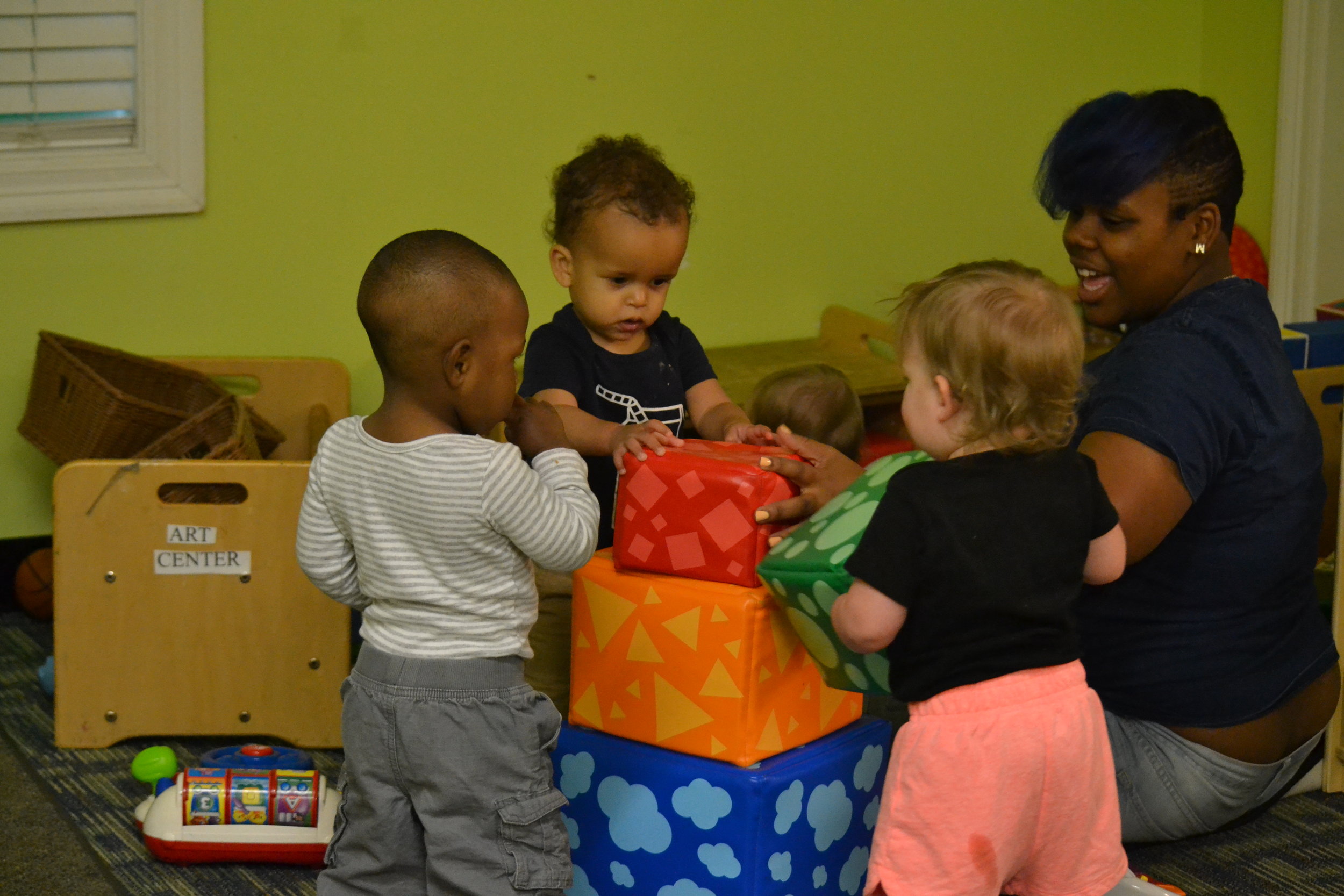
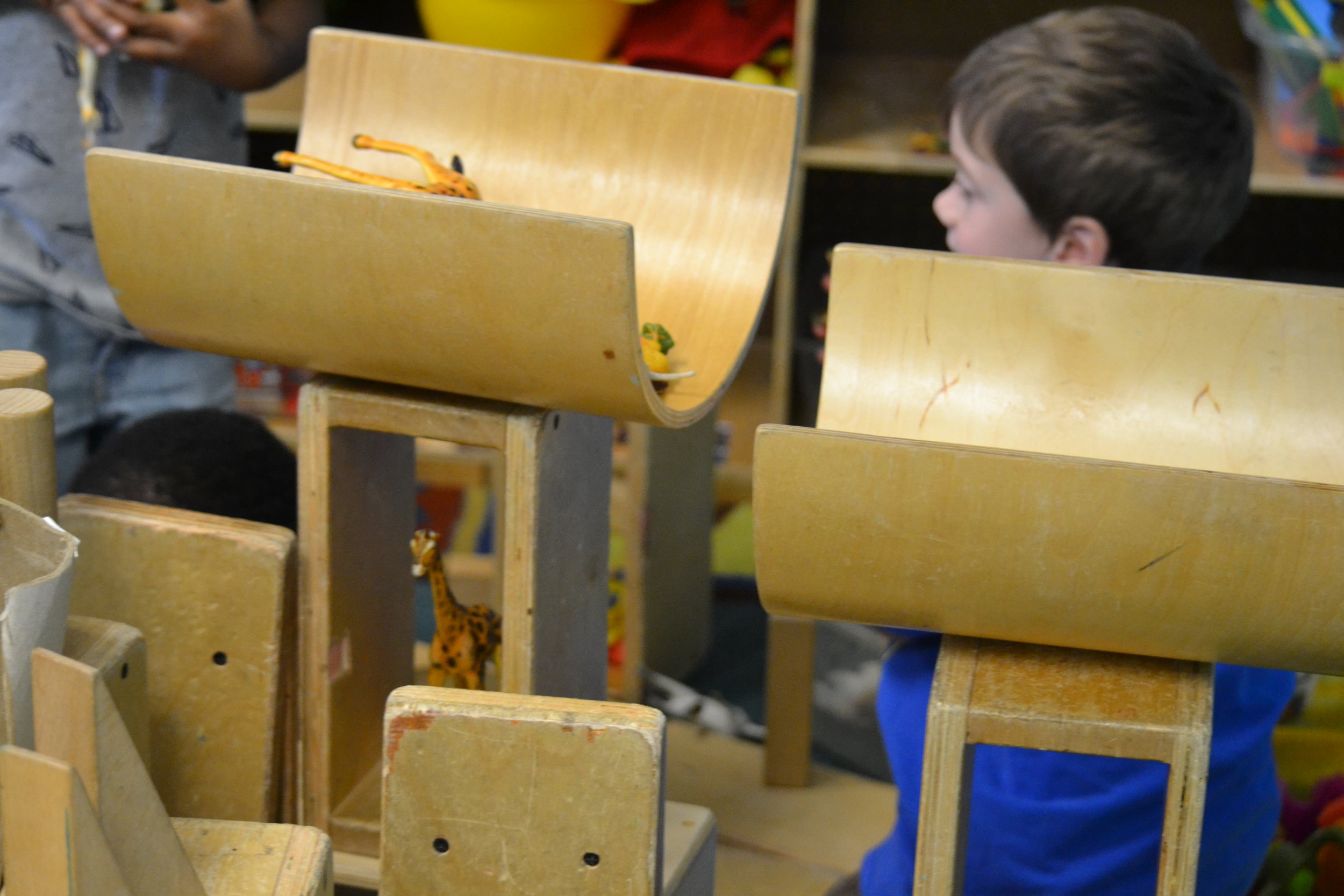
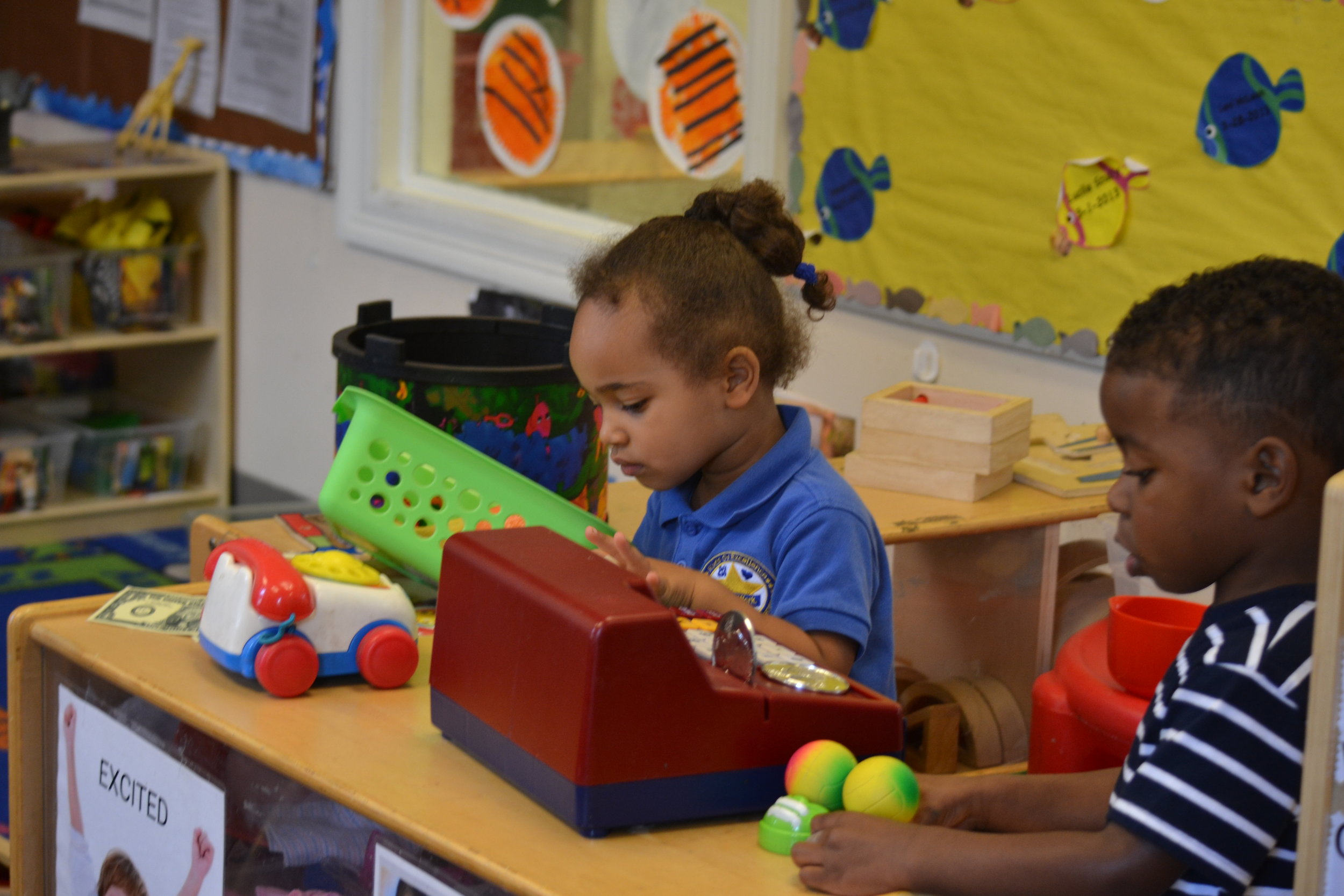
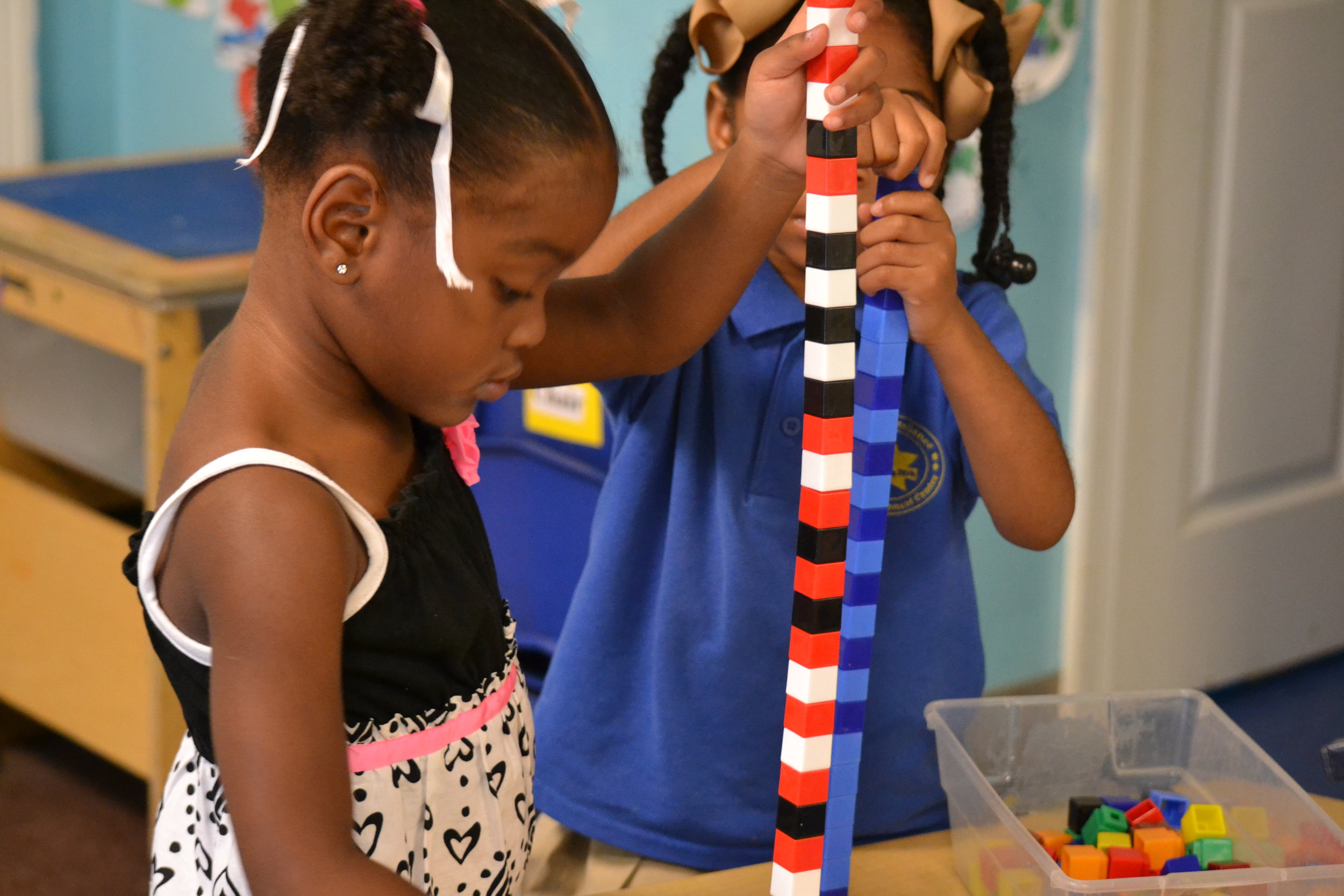
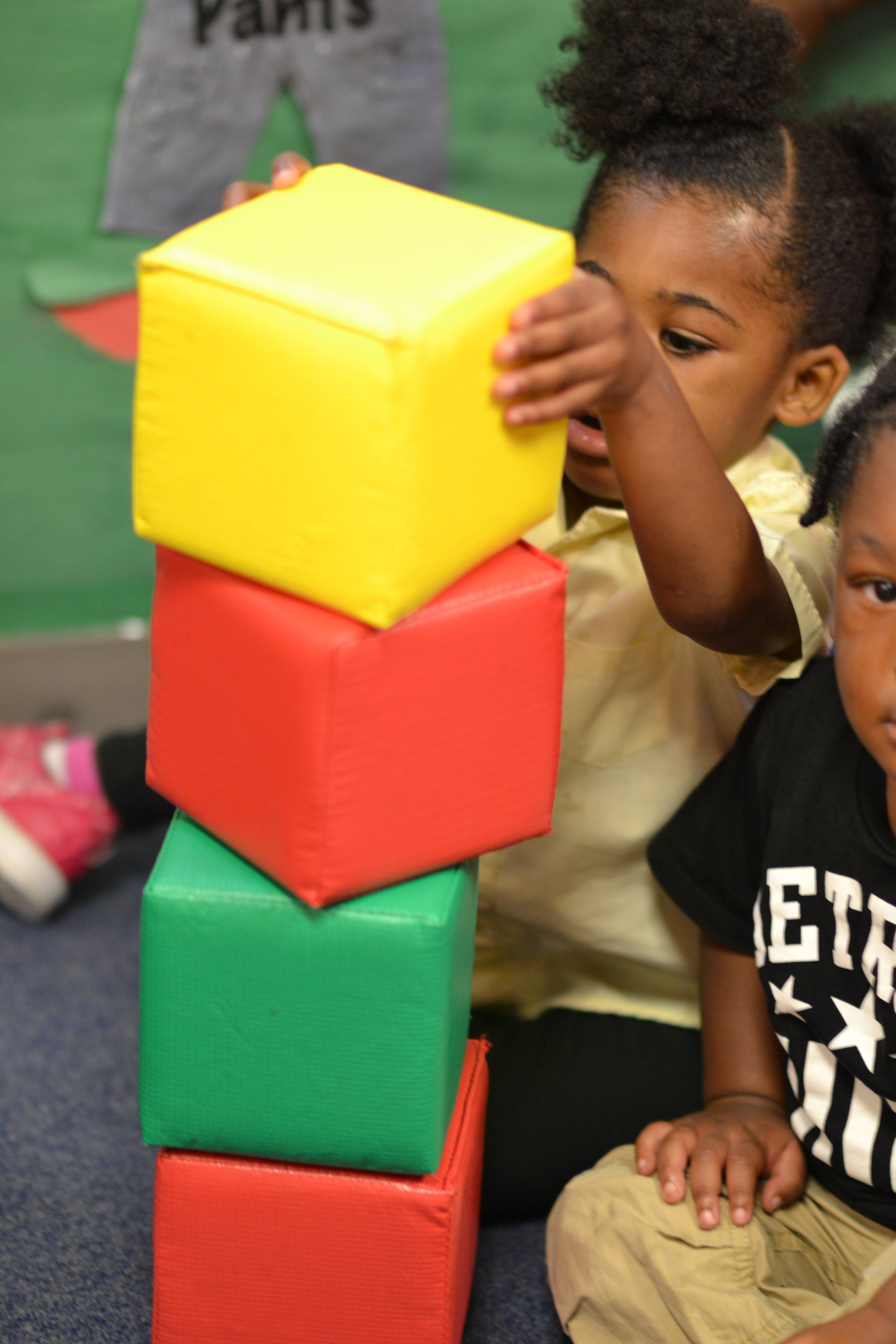
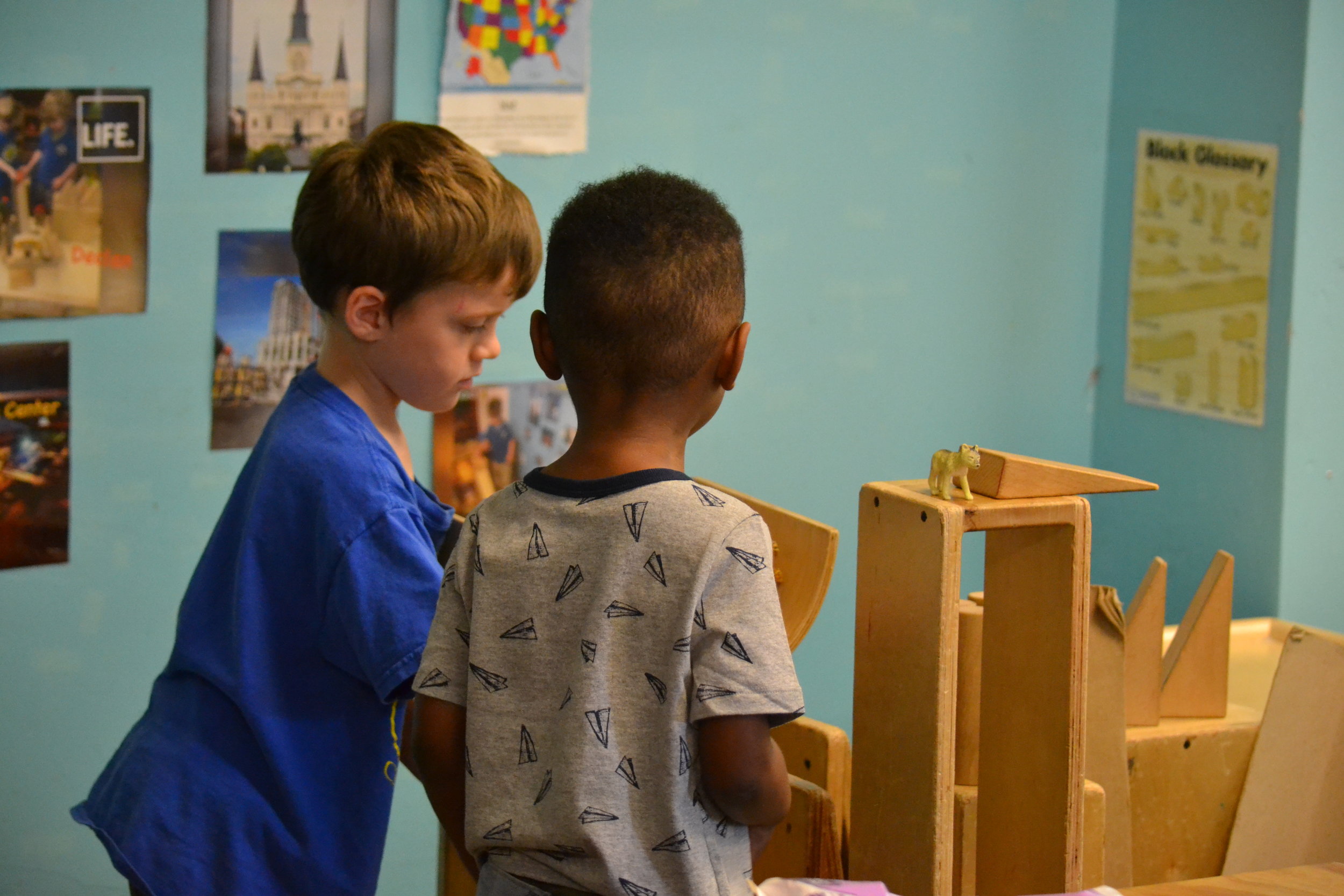
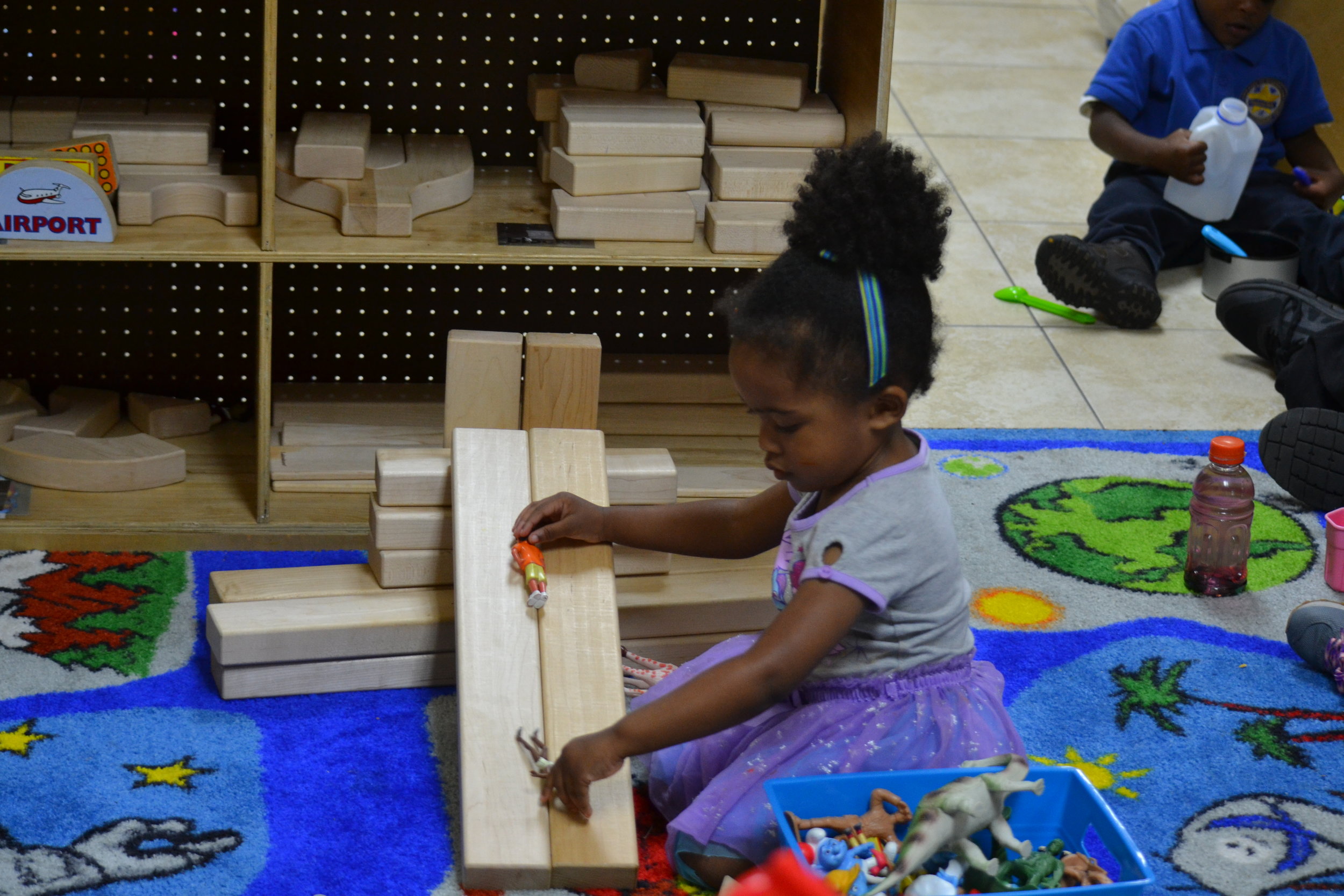
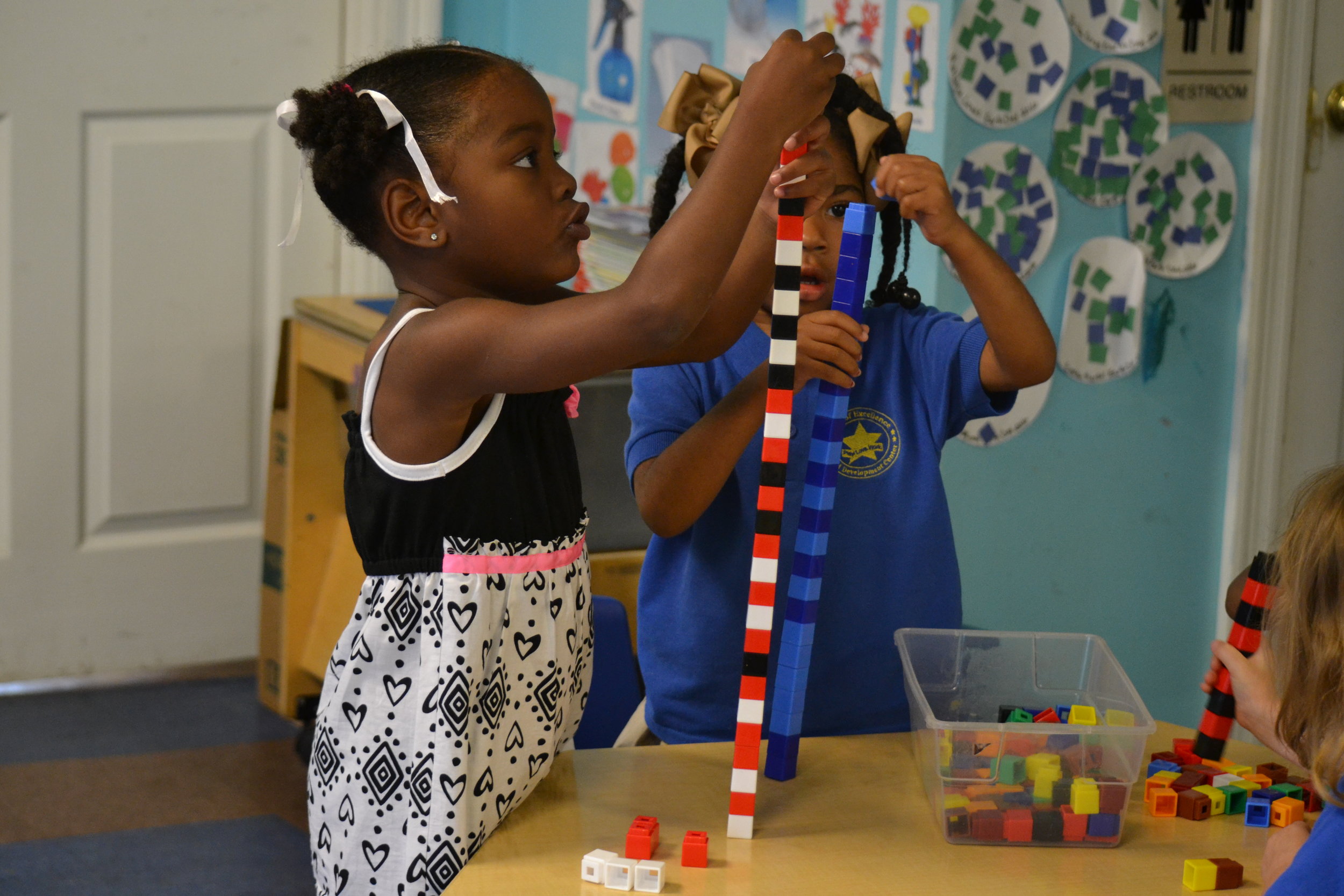
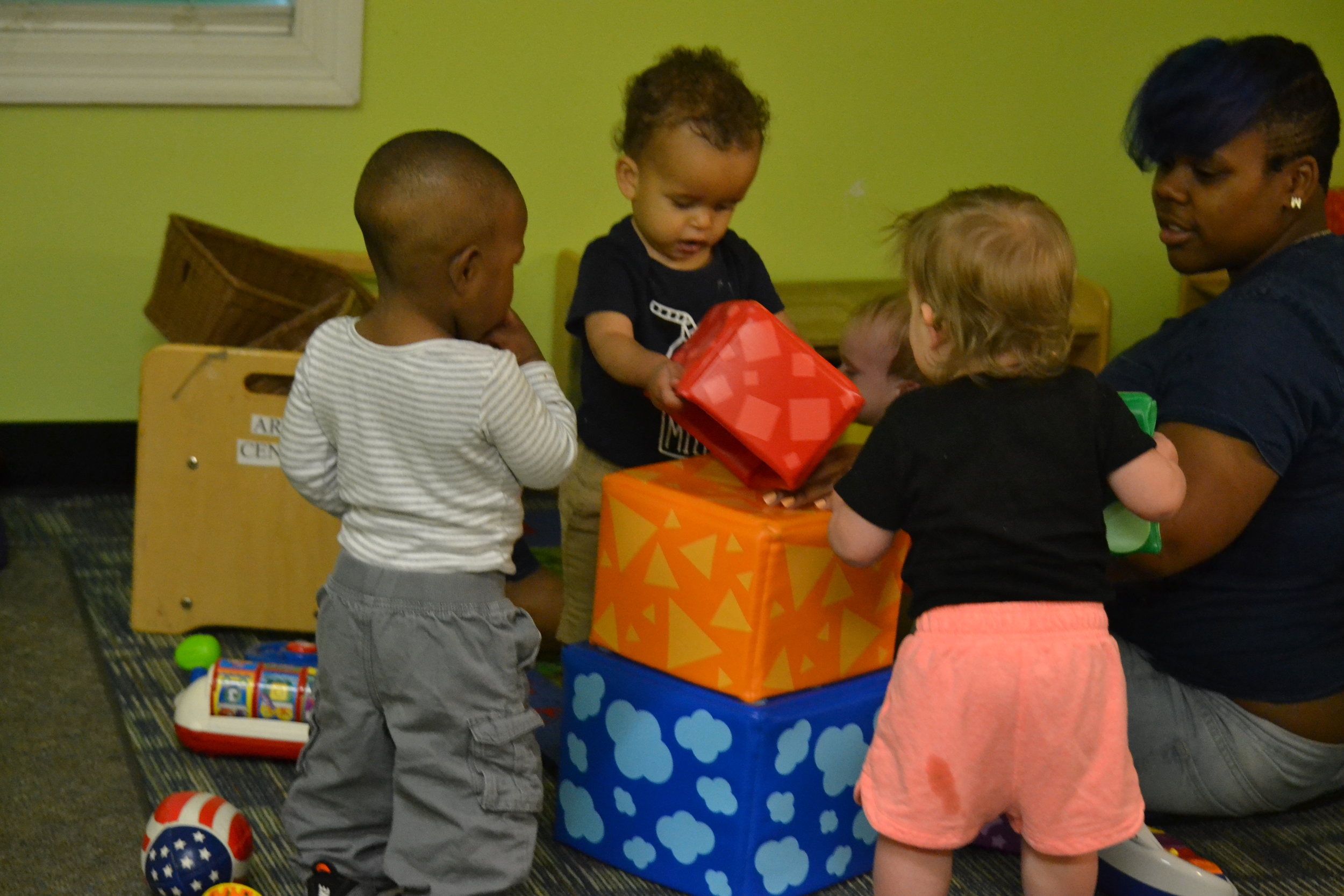
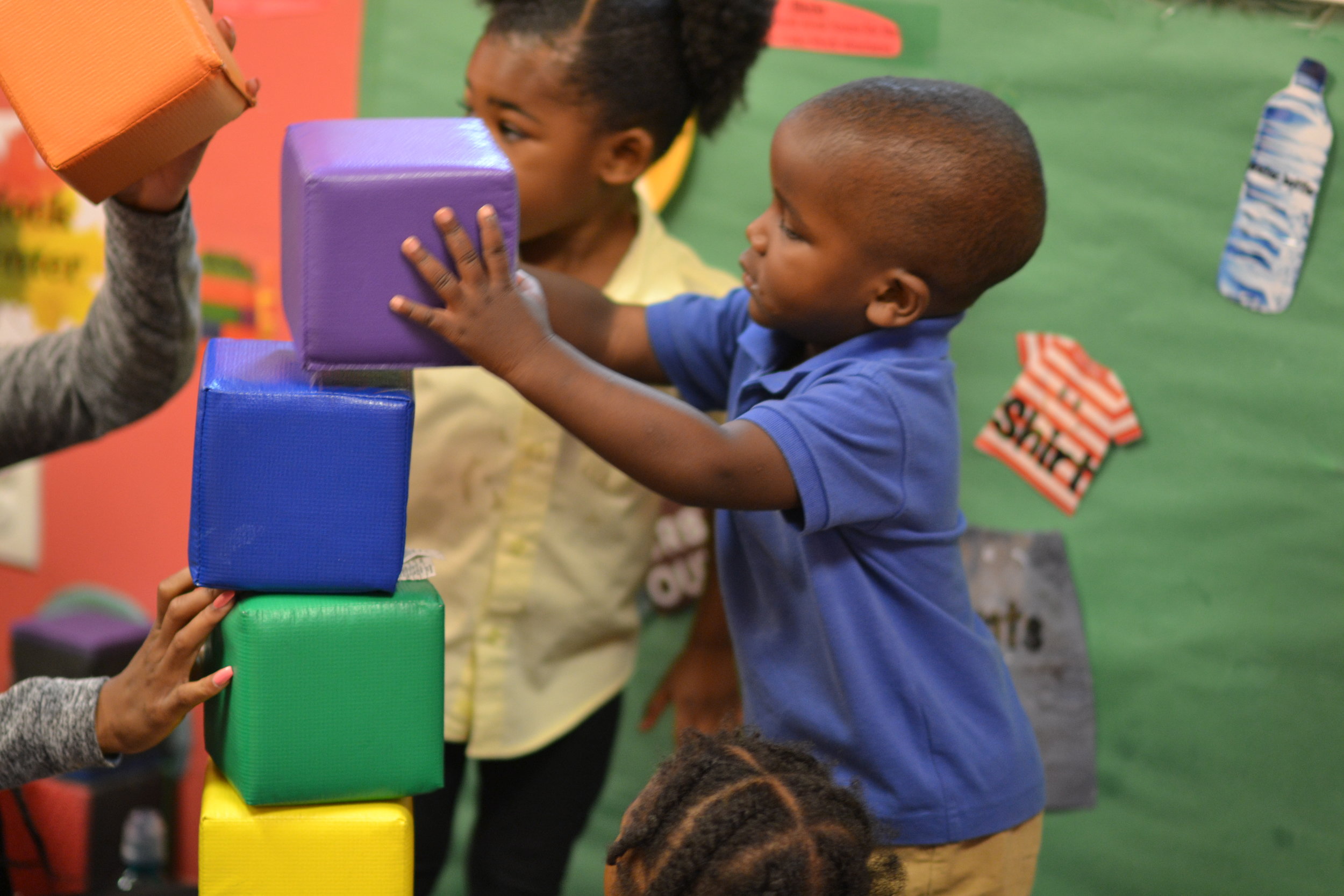
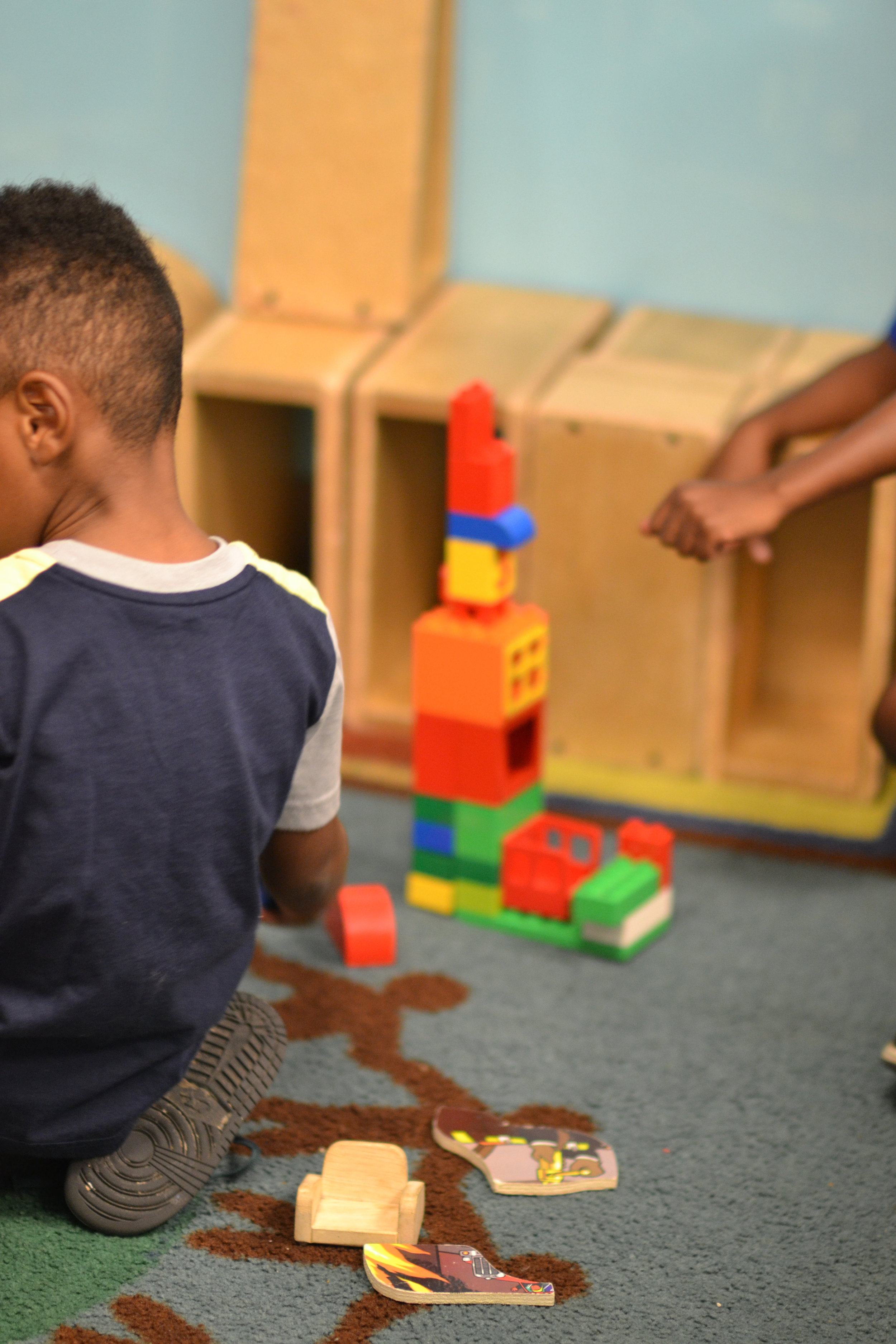

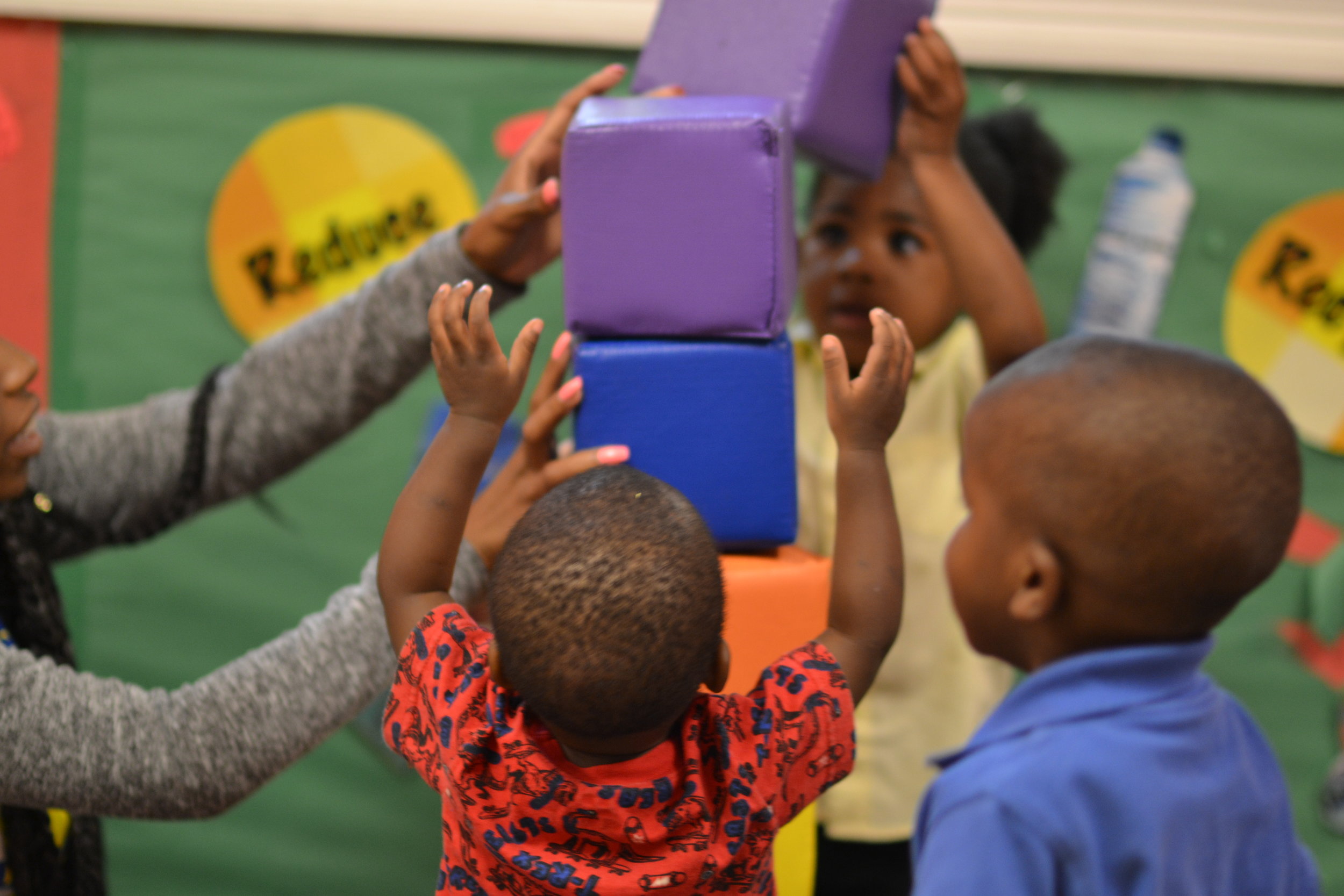
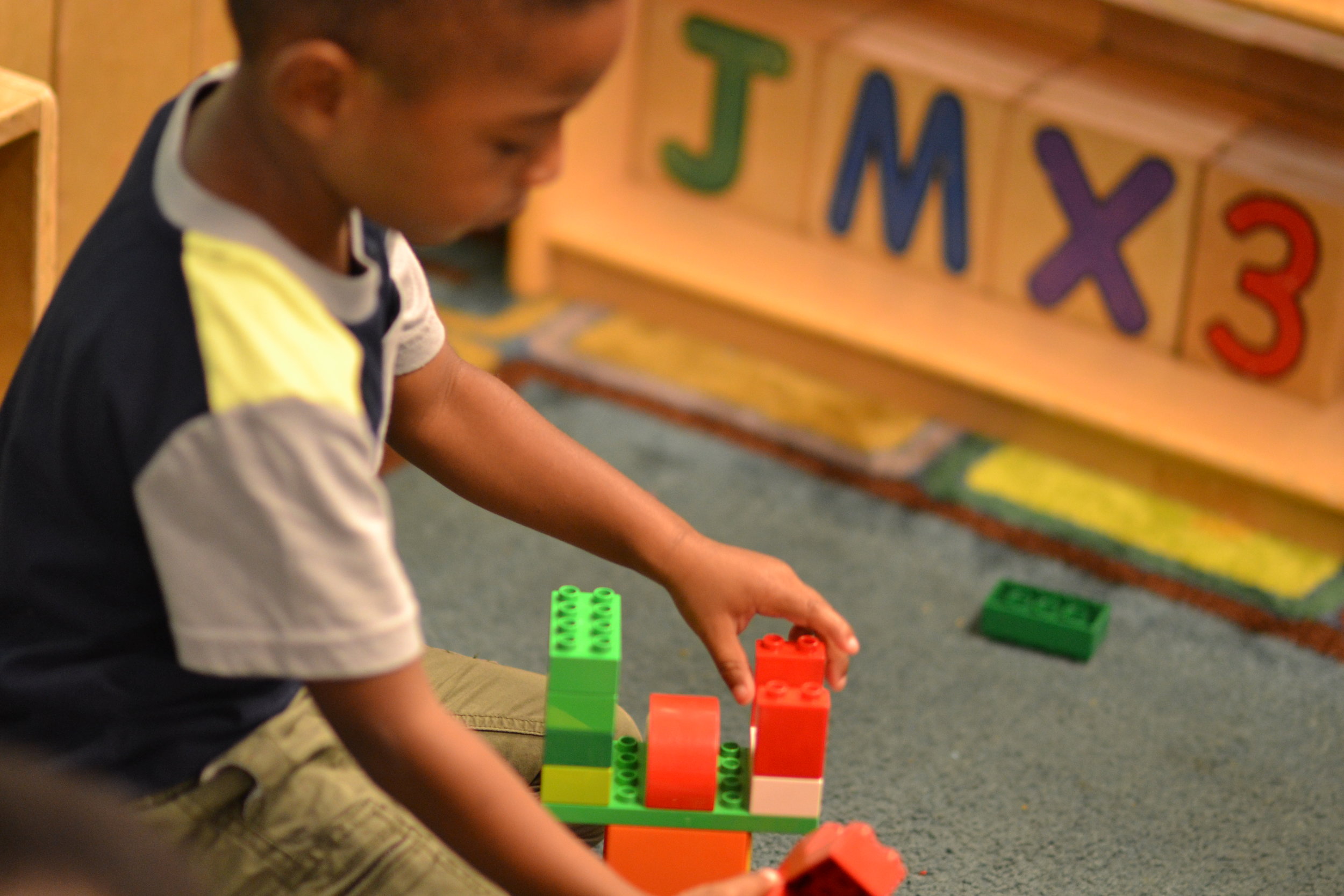
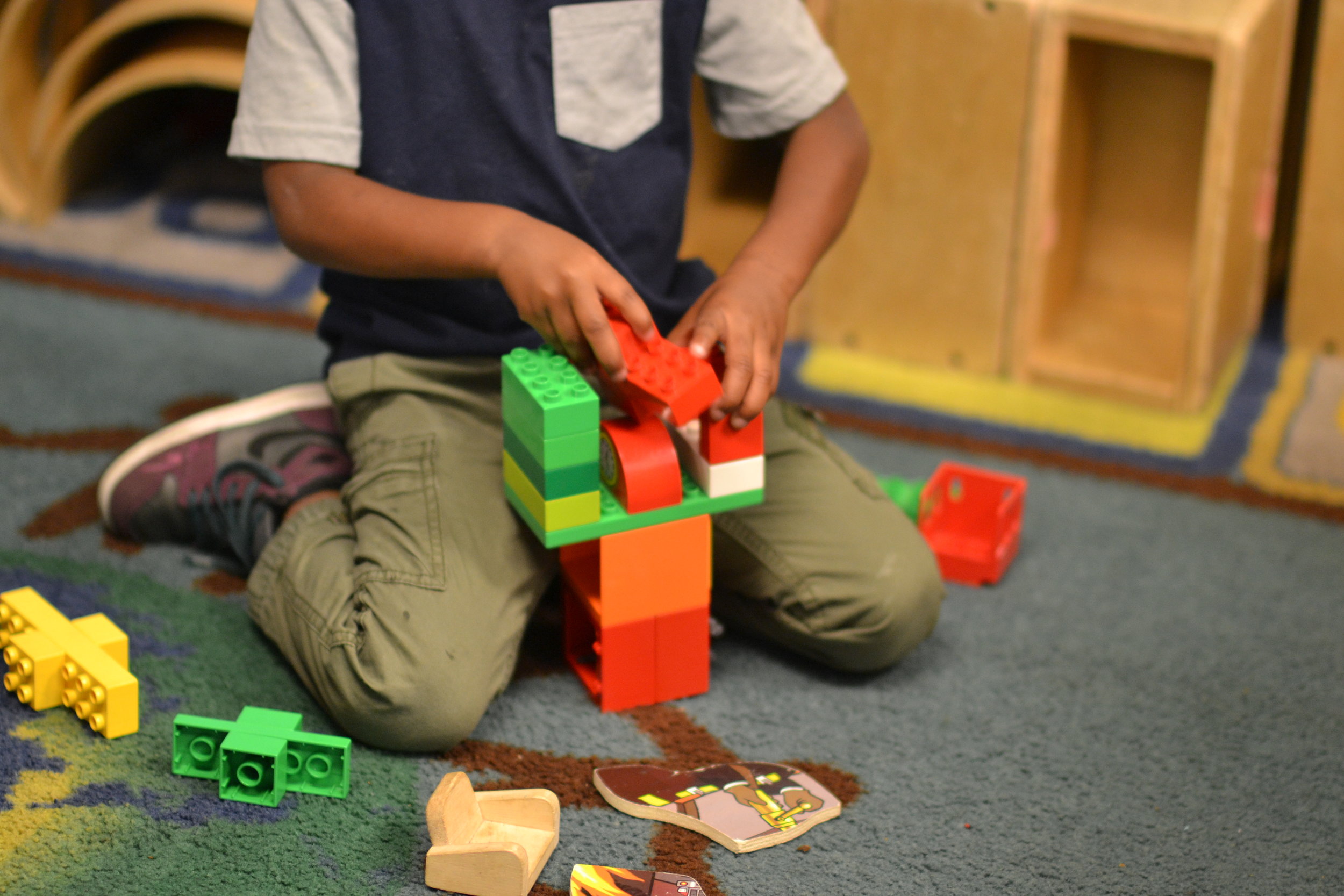
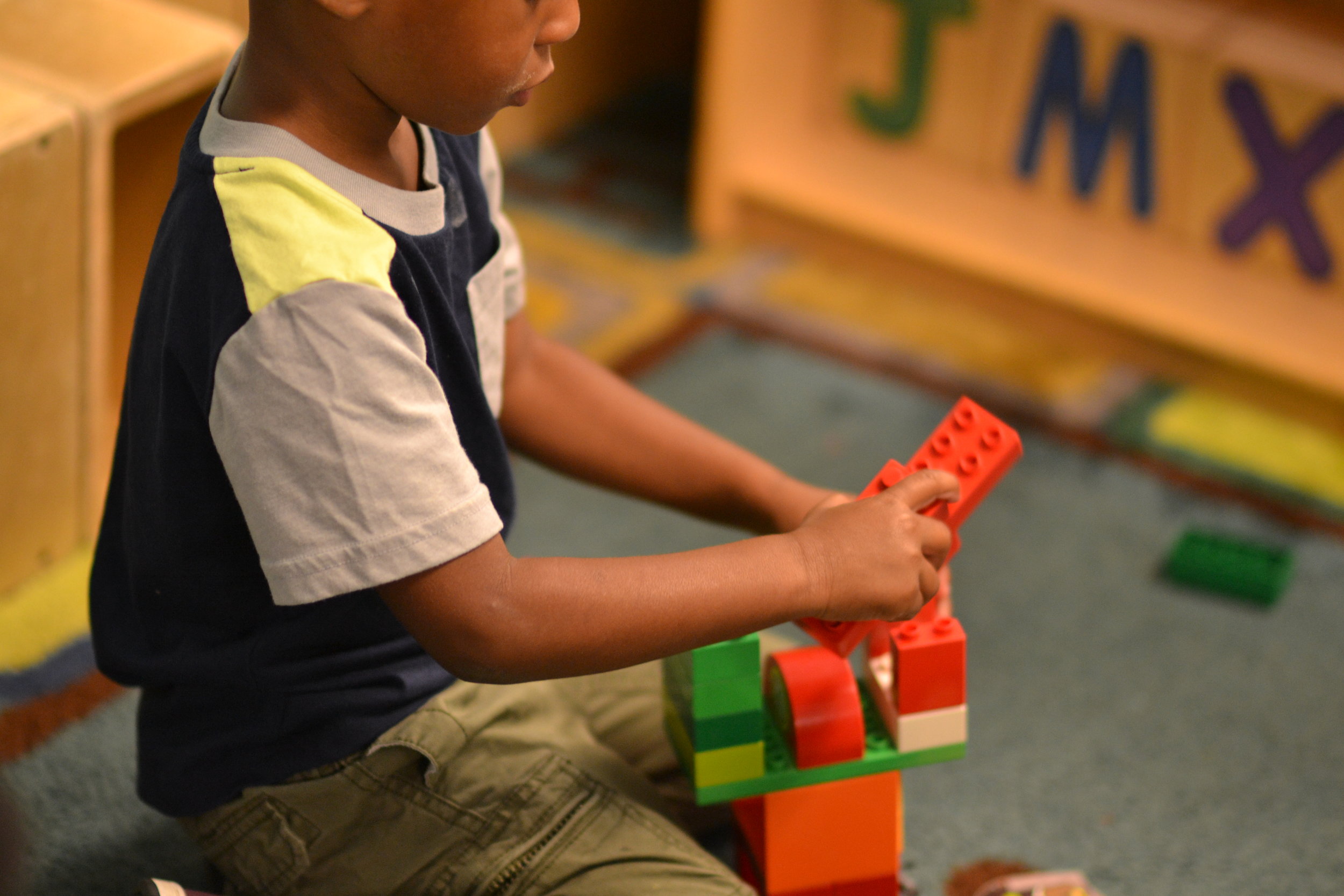
Students pictured above building with Kodo Kids Discovery Ramp Exploration Kit.
“There are no greater natural scientists and engineers than young children. Inquisitive learners who learn STEM concepts through play. High quality early learning environments provide children with the structure in which to build upon their natural inclination to explore, to build, and to question.”- JD Chesloff, Massachusetts Board of Early Education and Care
What is STEM?
STEM is an acronym for Science, Technology, Engineering and Math. In Early Childhood education these areas of learning look like the following: Science activities include exploring water and sand, comparing and contrasting natural materials like rocks and soil, rolling balls across the room, and looking through a magnifying glass to count how many legs are on the bug that was caught during outdoor play. Technology activities include identifying simple machines like gears and wheels and pulleys. Engineering in preschool happens in the block area. The children are planning and designing structures every day with little teacher direction. Math activities include counting and matching shapes and making patterns. Measuring is easy too, especially with unit blocks where two of one size equal one of the next size up.
(STEM sprouts teacher Guide, Boston Children's Museum.)
What Does STEM Look Like in a Classroom: Teaching STEM to Early Learners
At Kids of Excellence our curriculum is designed to foster the social, emotional, intellectual, and physical needs of the children we serve through play, encouraging students’ natural curiosity. Students develop STEM concepts daily in the classrooms as they build with small blocks, problem solve, and play with manipulative toys each day.
Play Integration
Play is a primary means by which children explore the world, investigate its properties, and build an understanding about how the world works. Through play students engage in STEM concepts daily, they actively pose problems, explore solutions, and develop understandings of real world concepts of form and function. For example, students develop cognitive skills like math and problem solving in Dramatic Play through pretend grocery store, problem solving through imaginative play to determine “how much money will I need for this item?”, “how many items will I need for the family?” or using tools like a register to count money.
Student Collaboration
In each center we promote collaboration and teamwork for our students, it is important that our students learn how to positively navigate social relationships by working and playing together. Through STEM learning students co-operate, take turns, and share equipment as part of a group. They are taught to express their ideas and to also be active listeners, teaching them to respect and value their own work and ideas, and those of others. For example, students often participate in team building in the Block Center collectively explore and work together to build structures, identify problems, and predicting solutions through reasoning and mathematical concepts.
Teacher Involvement
Our students are natural scientists! The role of the teacher is to be an active and supportive participant in our students learning. Teachers should observe, support, and extend students play by asking open-ended questions related to the concepts being explored. For example, to optimize learning teachers should ask “what” questions instead of “why” questions. “What” questions focus on what is happening, what you are noticing, and what you are doing, “what did you try” or “what do you think will happen”. “What” questions help students develop valuable communication and observation skills and builds student’s confidence by giving them questions they can answer as experts.
STEM Activities at Home
Cooking Activity: Explore your kitchen with your child and allow them to help you prepare a meal, select a recipe and follow the recipe incorporating collaboration, order sequencing, cutting, measuring, and mixing. Challenge them by asking what question, “what comes next” or “how many cups of water to add”.
Build structures without blocks: Together with your child collect objects like straws and tape, plastic cups, playdoh and straws, or even marshmallows and pretzels, allow your child to link pieces together to create and build 2 and 3-dimensional shapes, structures, and towers. Challenge their creativity by asking them “what are you going to build today”, “how high can you make a tower of cups”, or “how many shapes in your structure”?
Explore Color: Create a cool color wheel using skittles, a plate, and warm water. Let your child put a circle of skittles on the outskirts of a plate and then add warm water, the colors from the sweets will run together in the center of the plate, communicate throughout the activity ask questions about the colors, “what colors will we see”.
Go on a nature walk: Take a reusable bag and encourage your child to collect interesting objects. When you get home, help your child sort treasures into categories, ask questions about color, texture, size, and shape.







